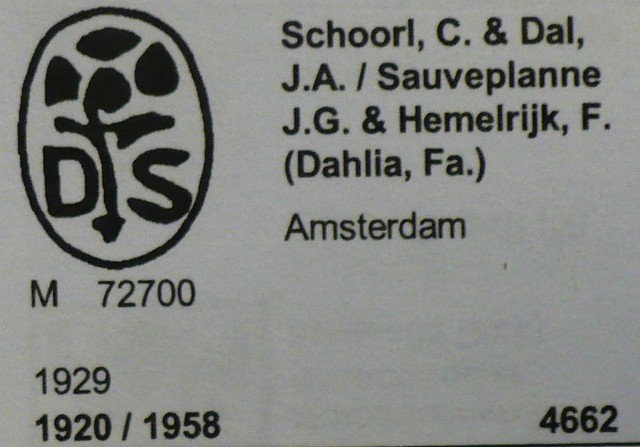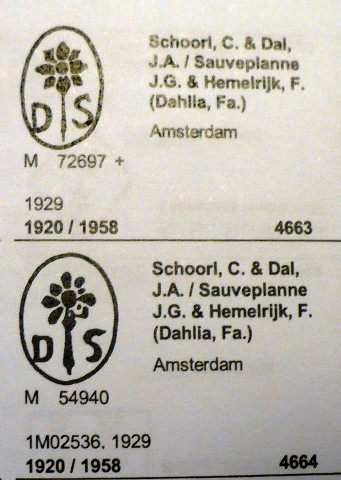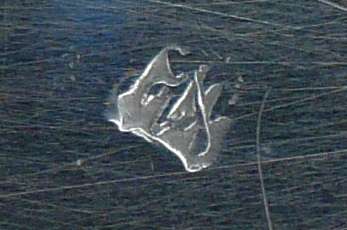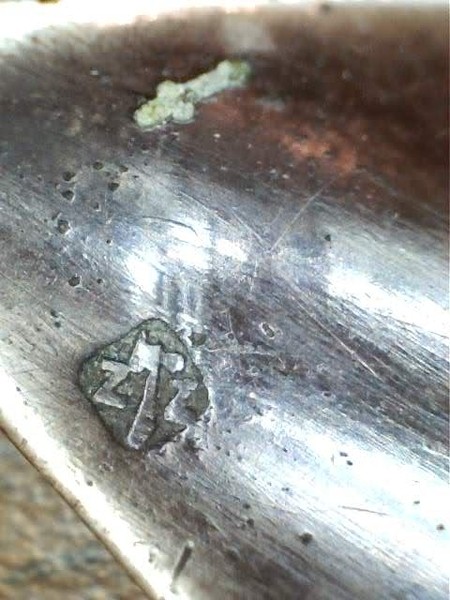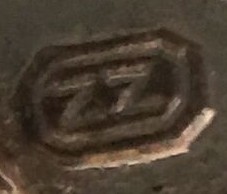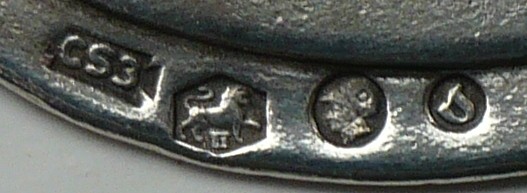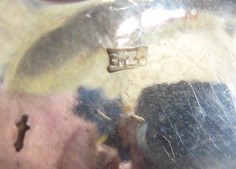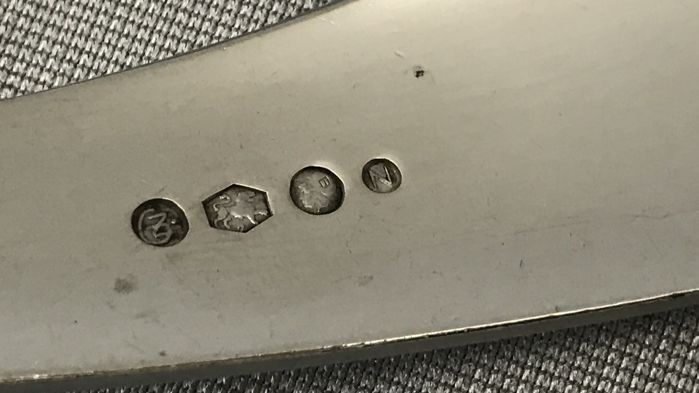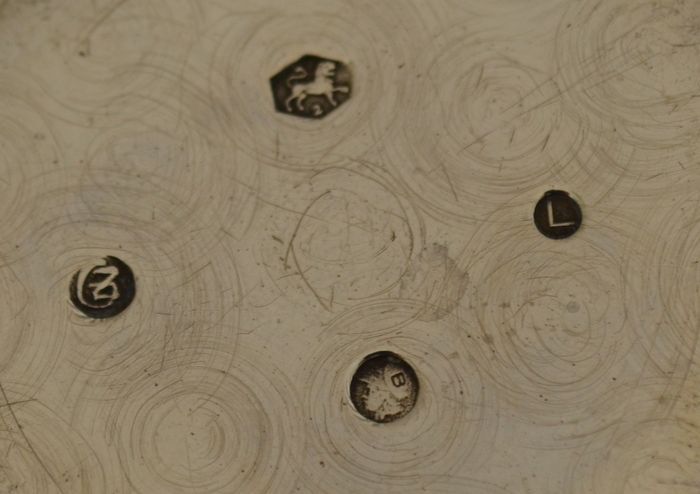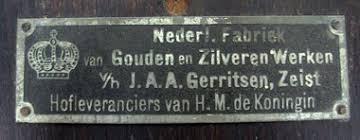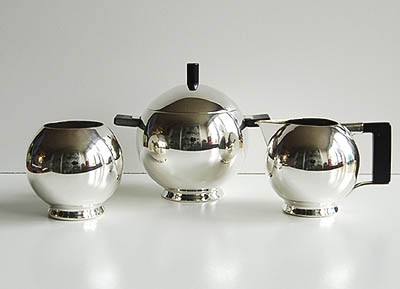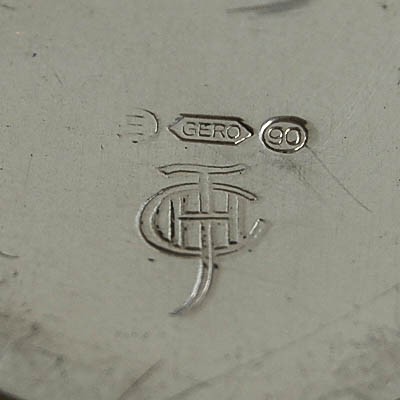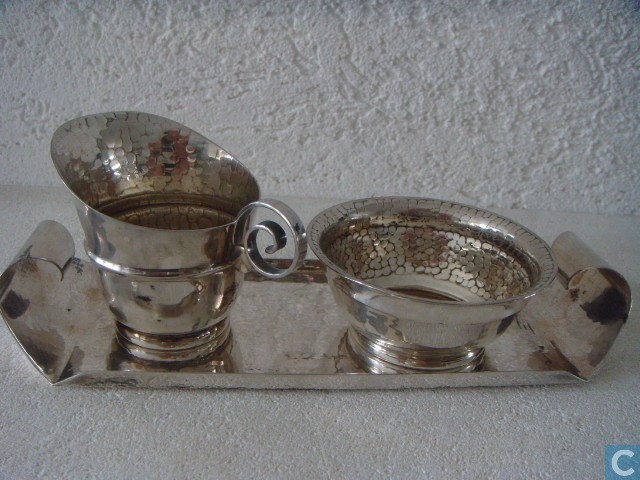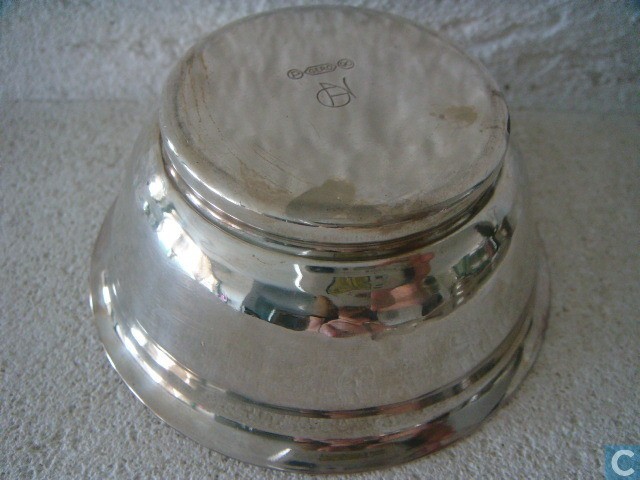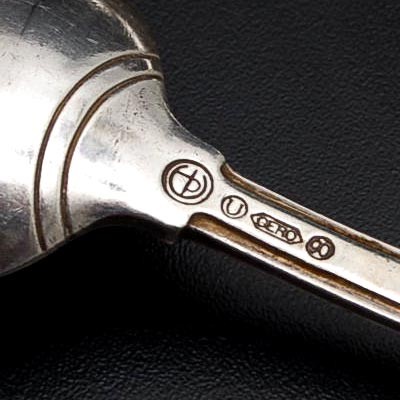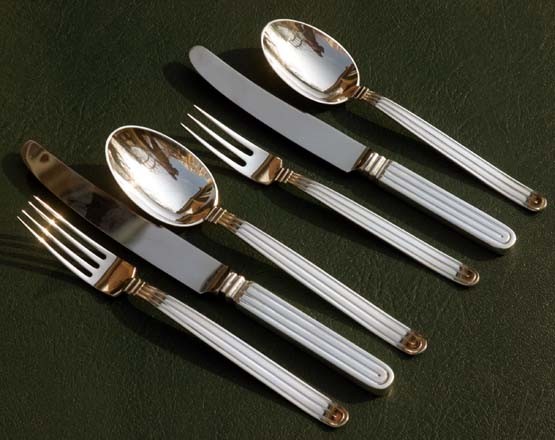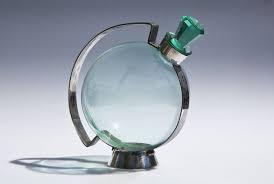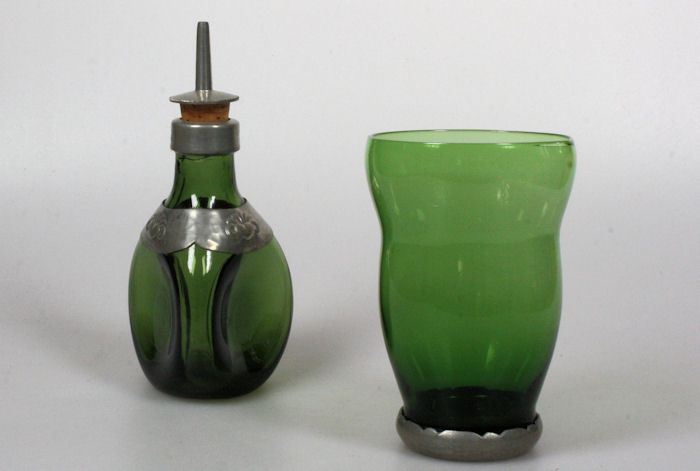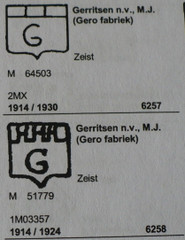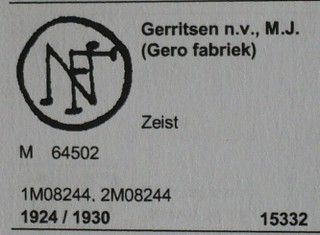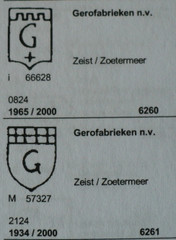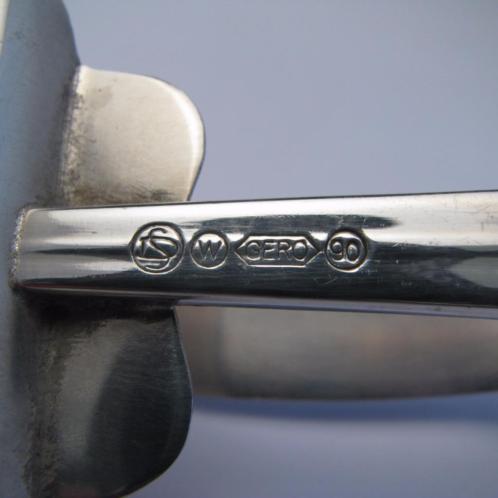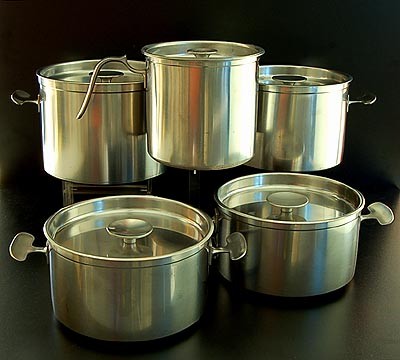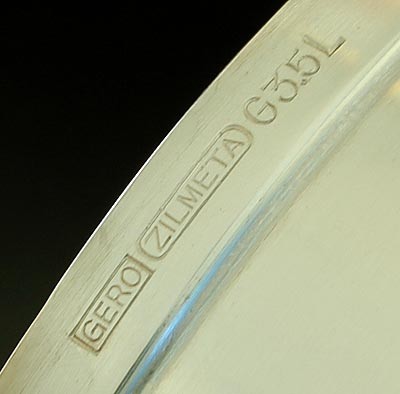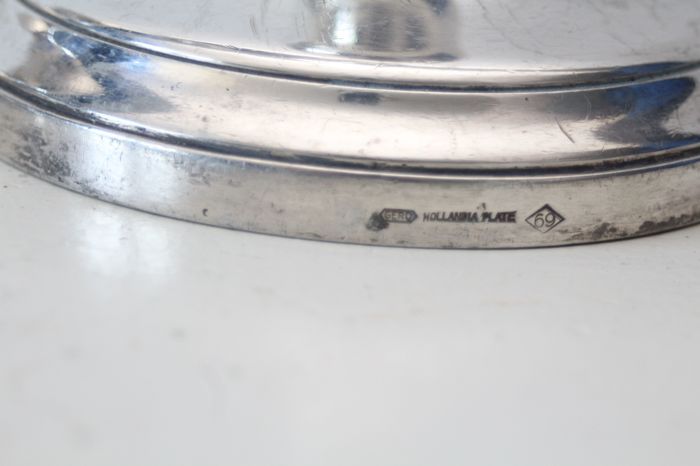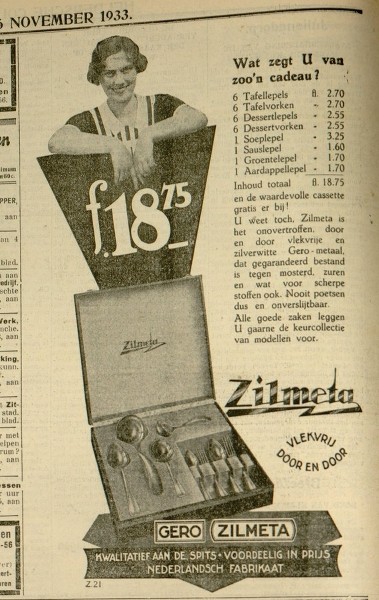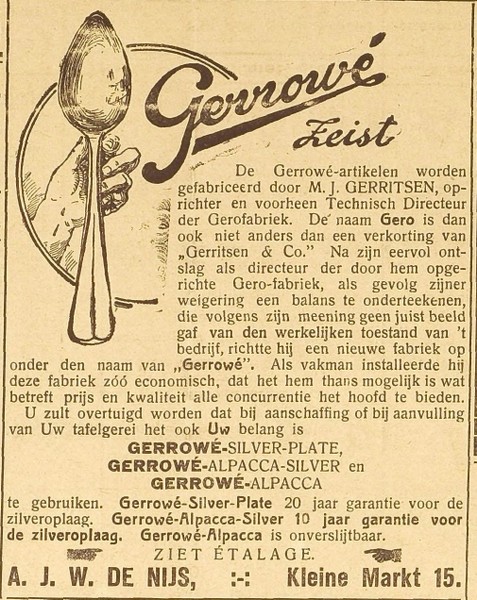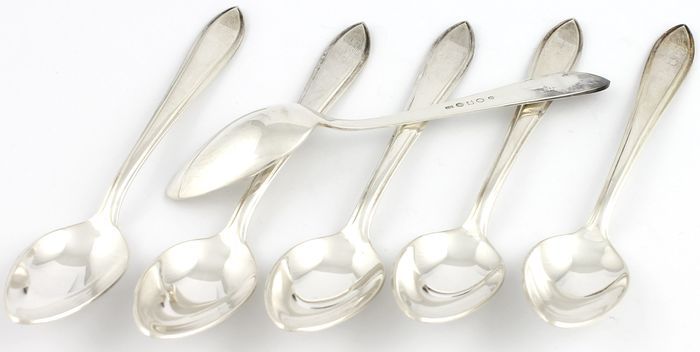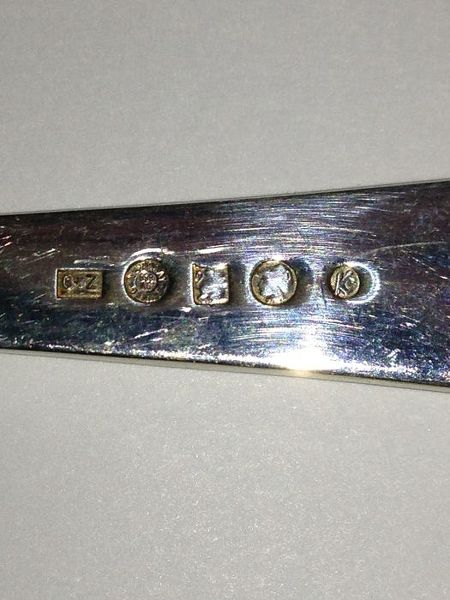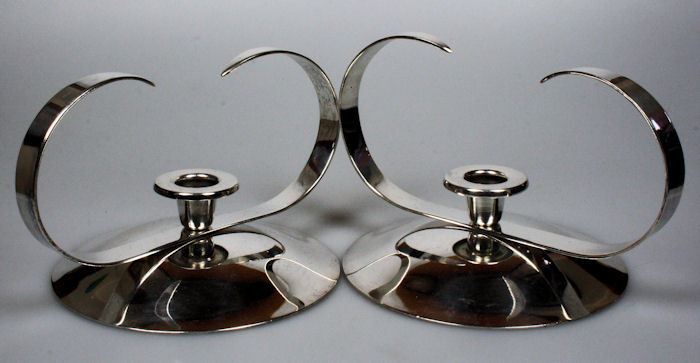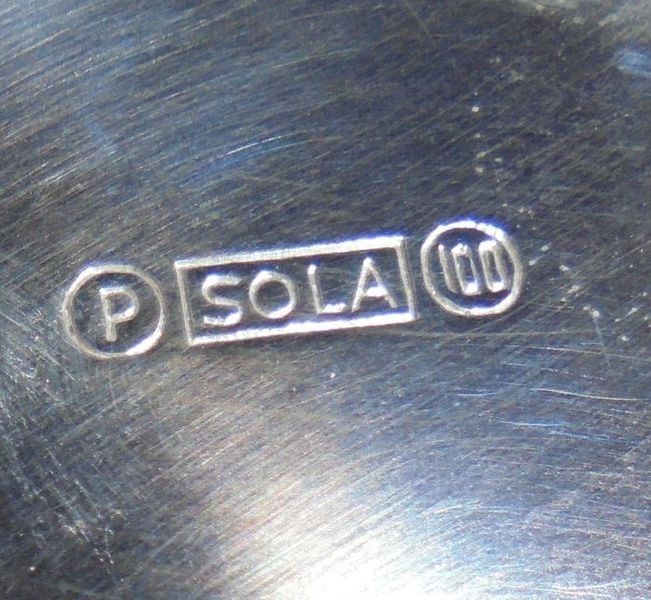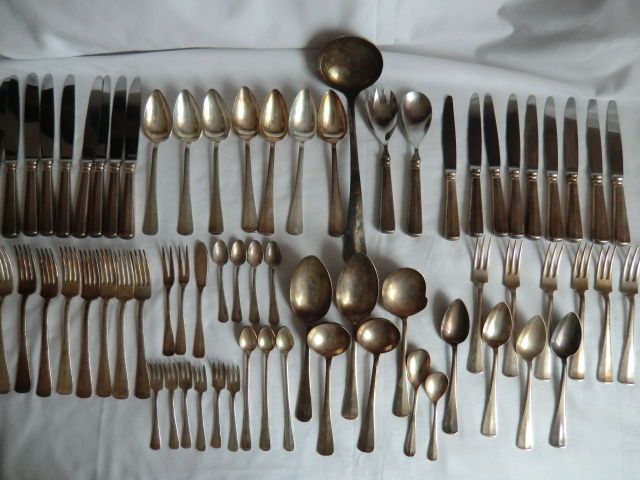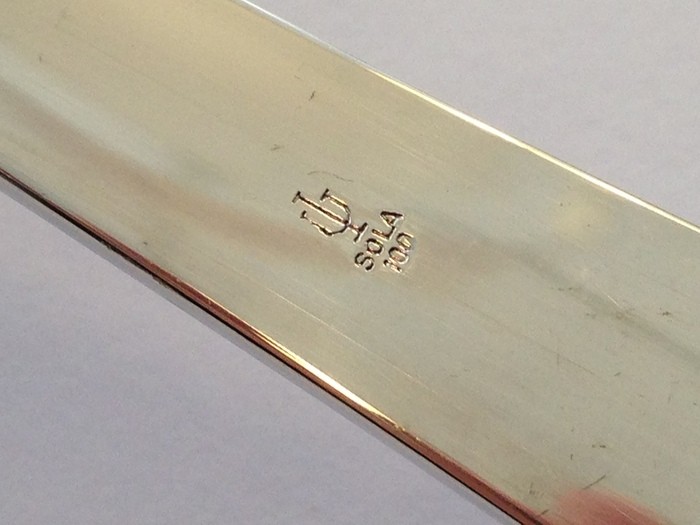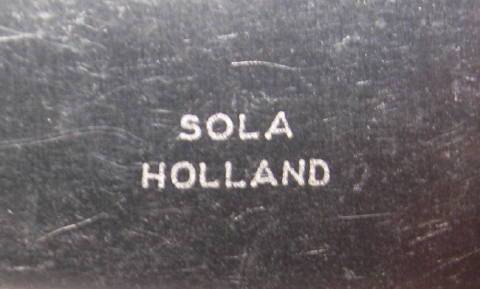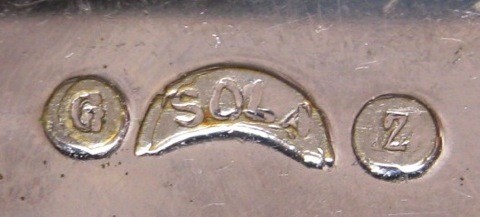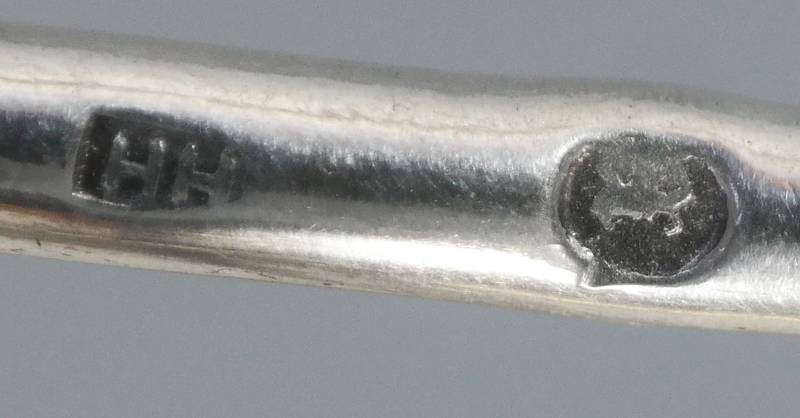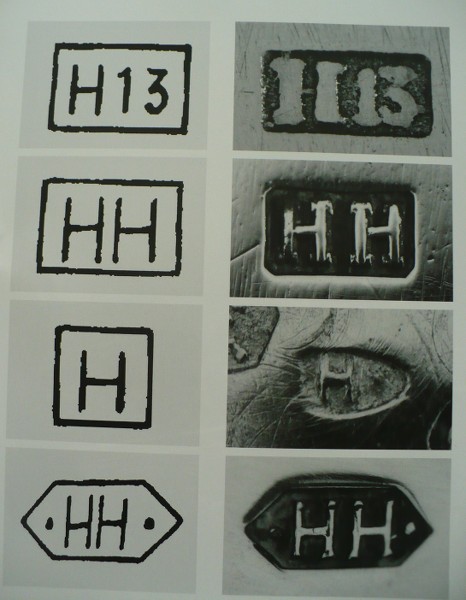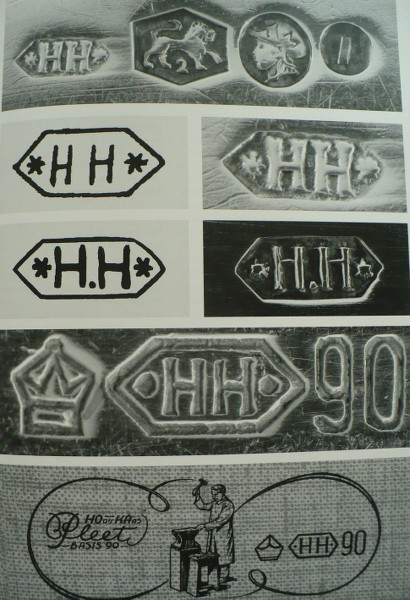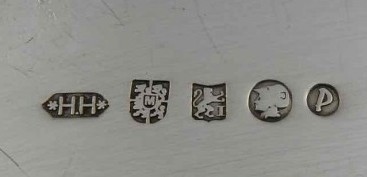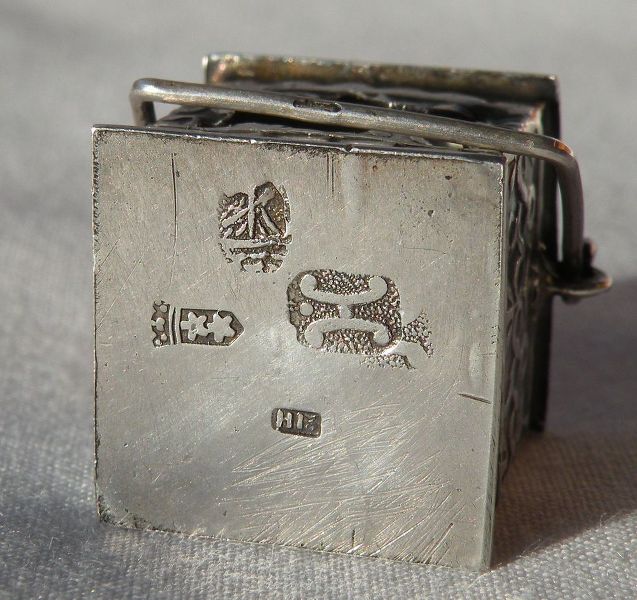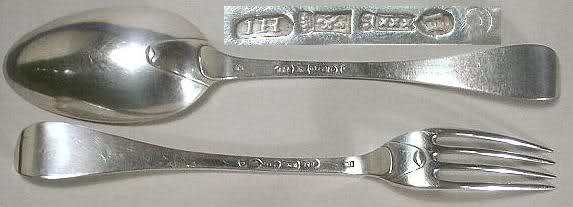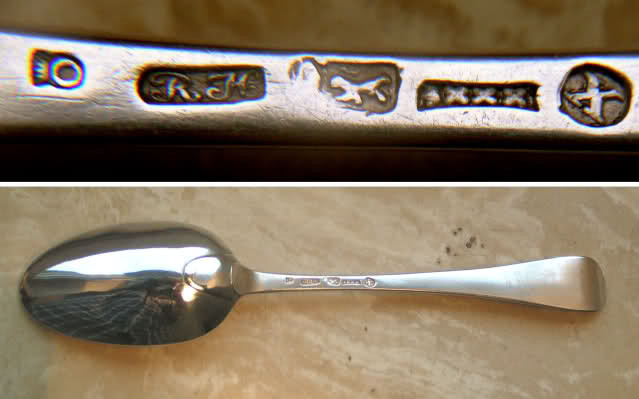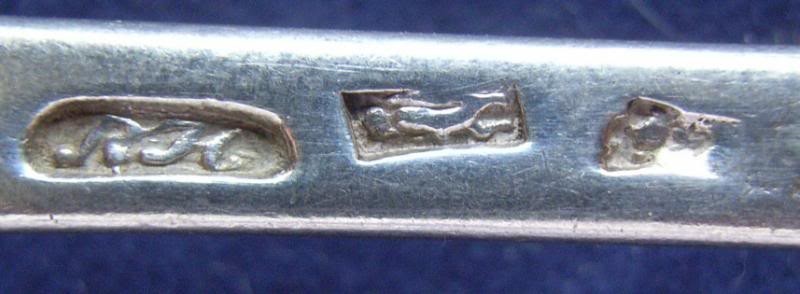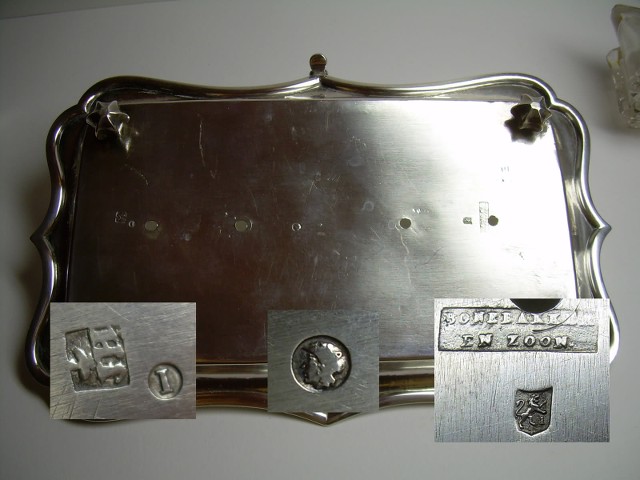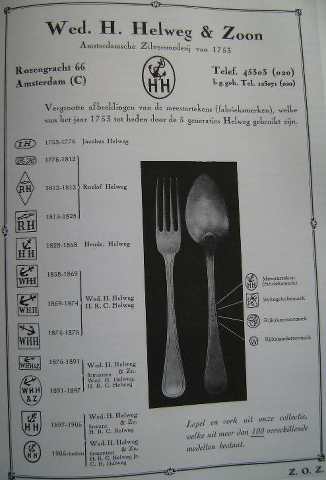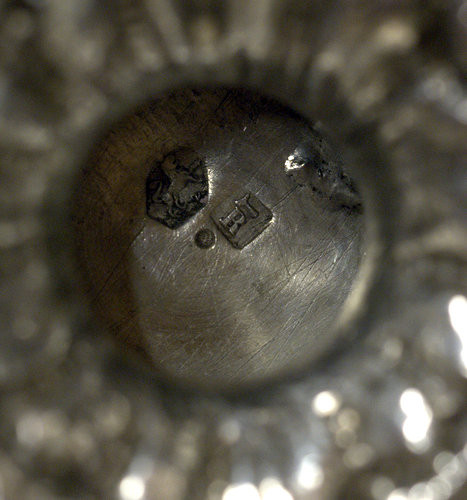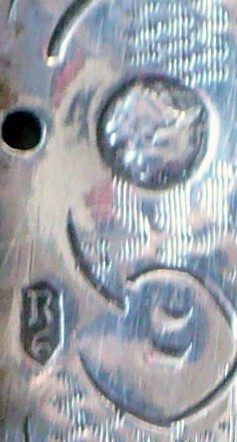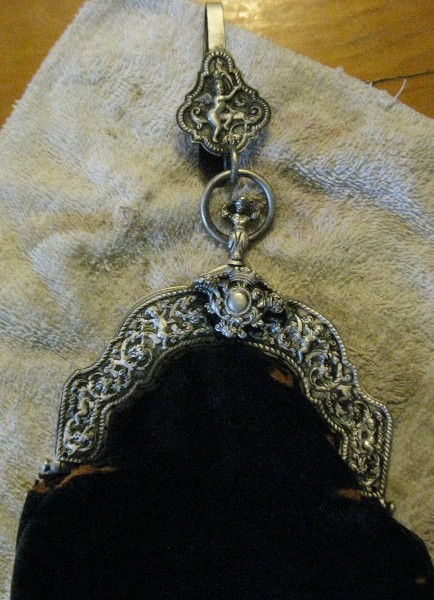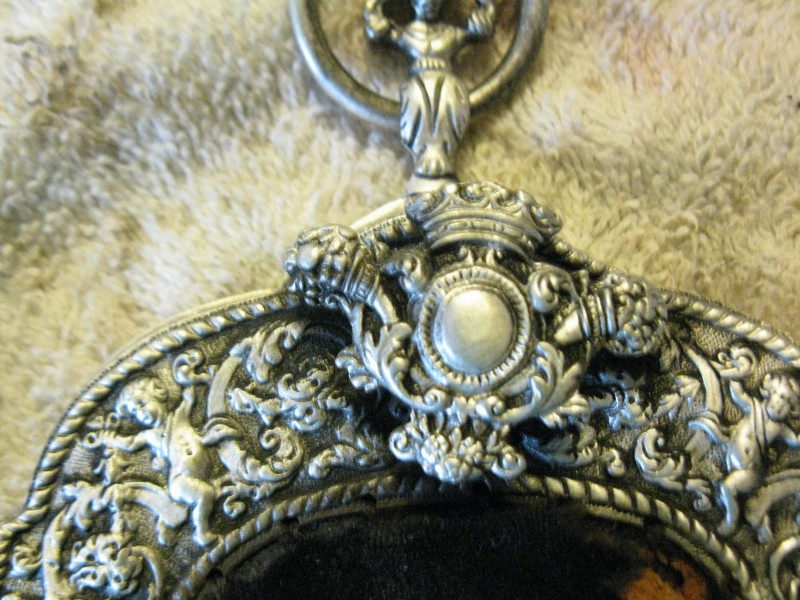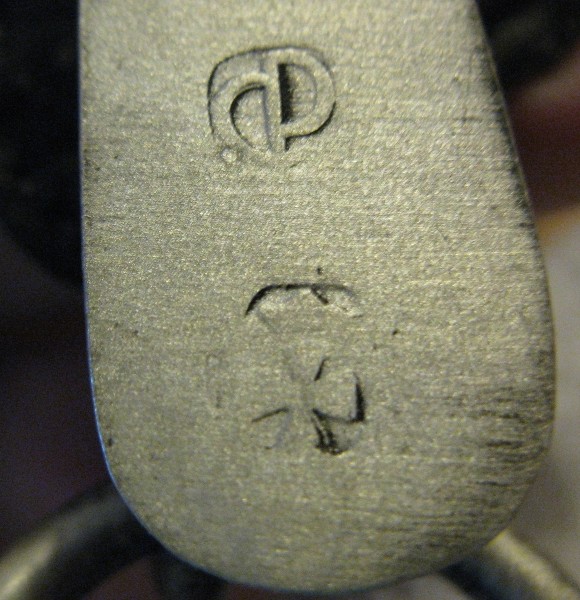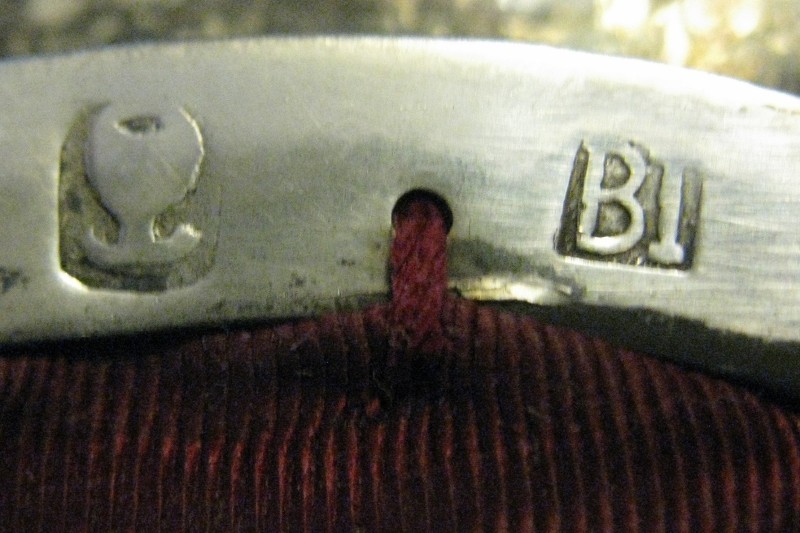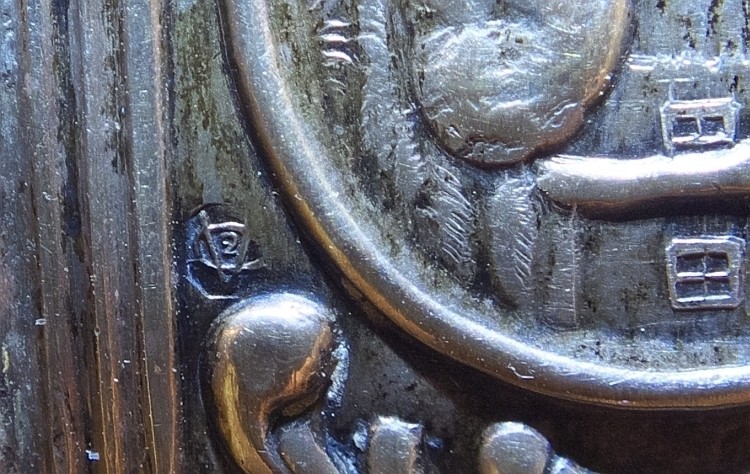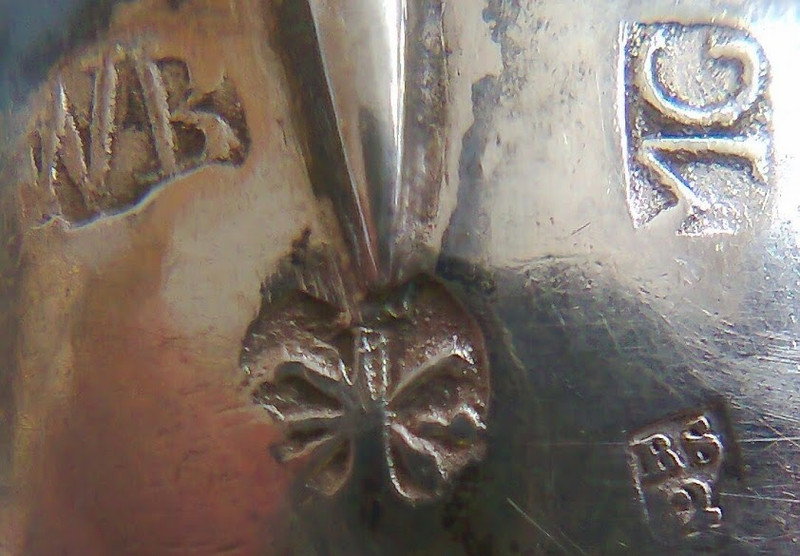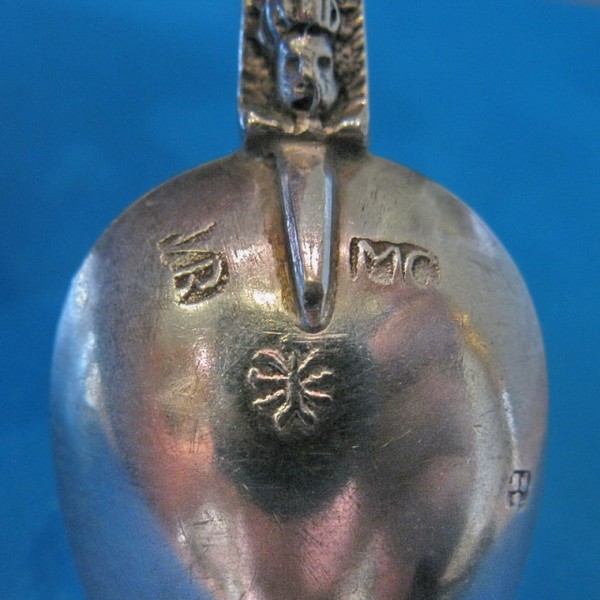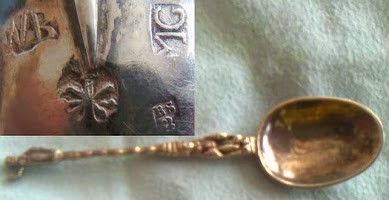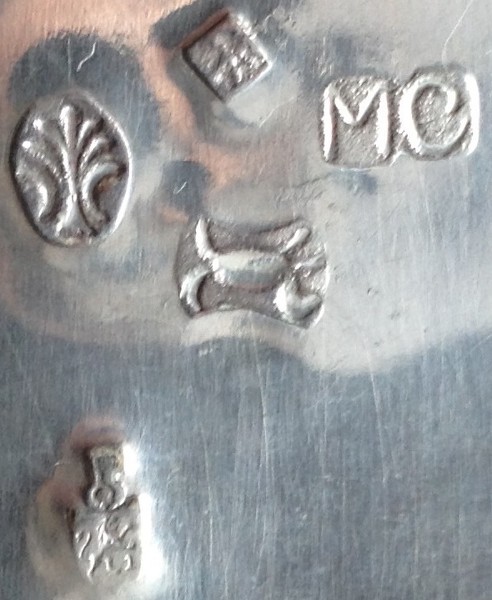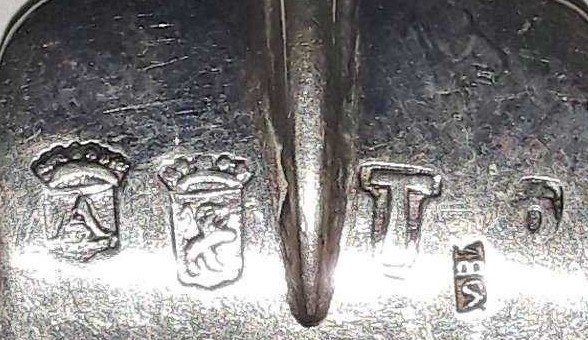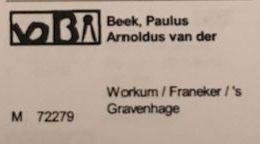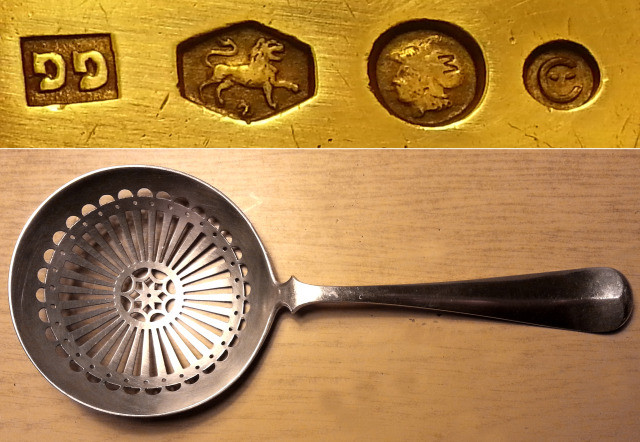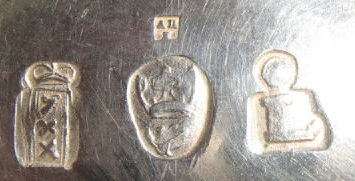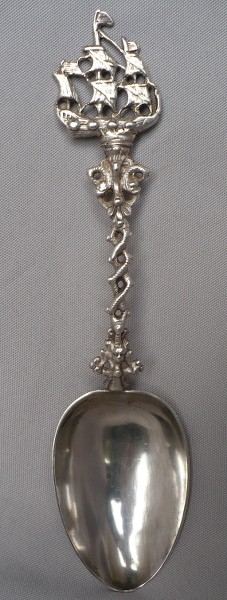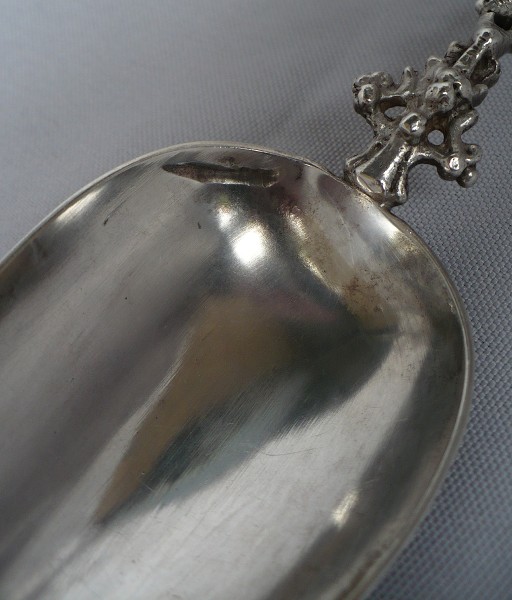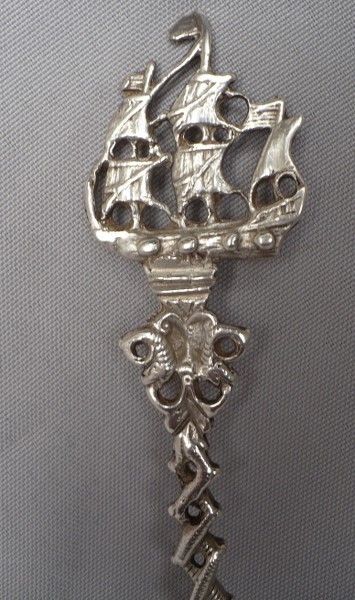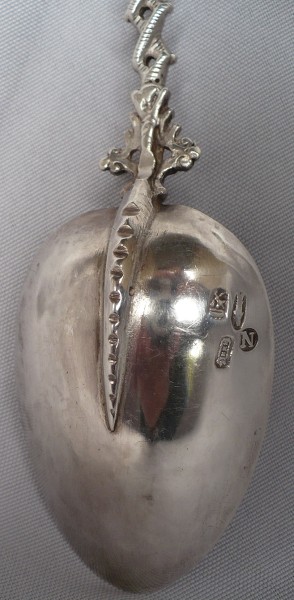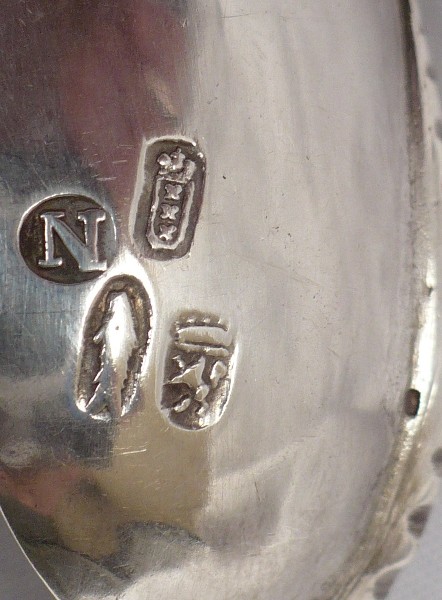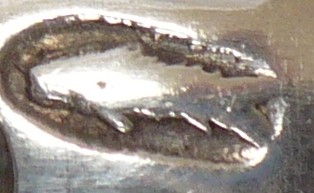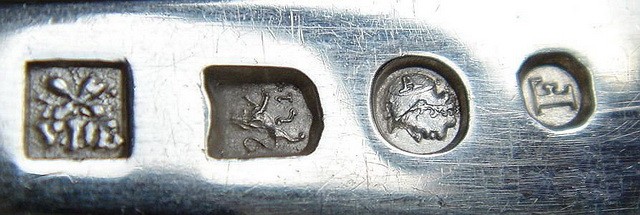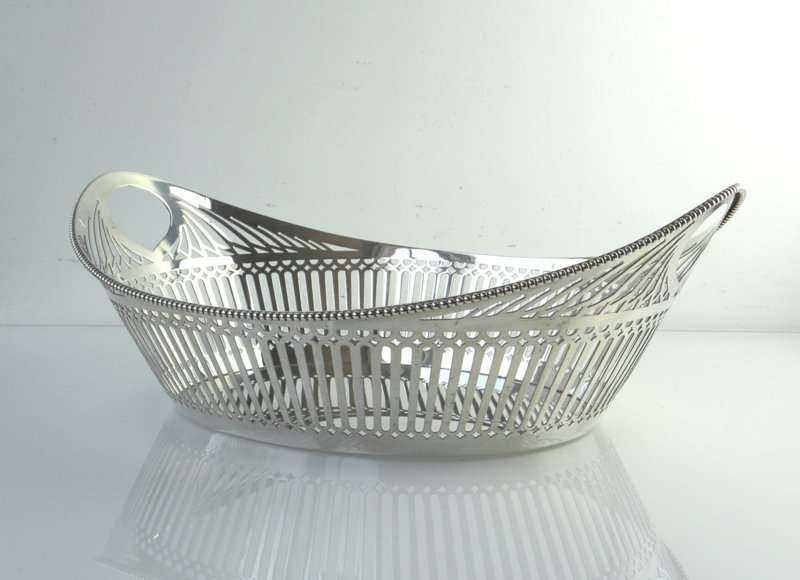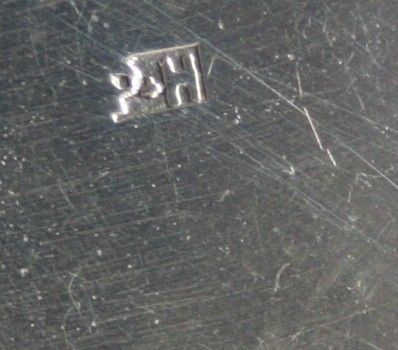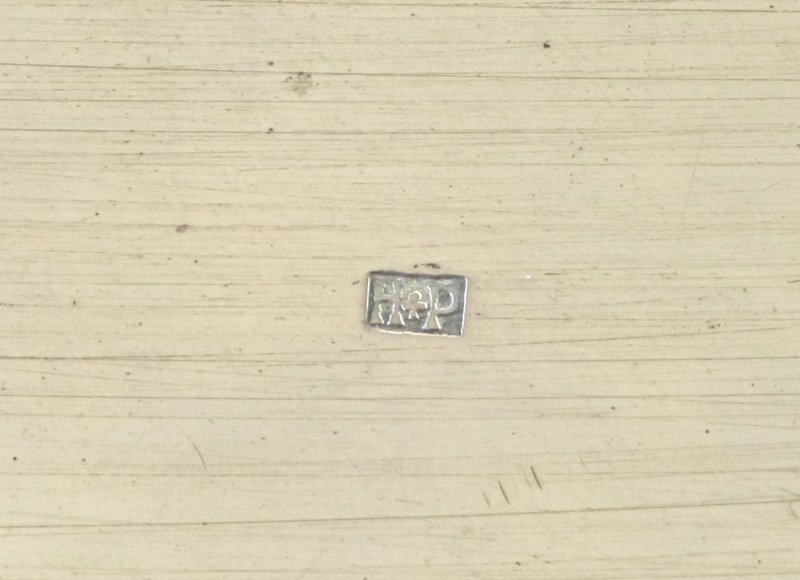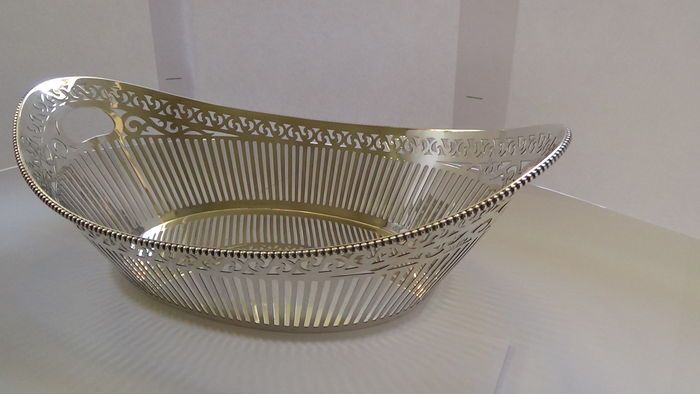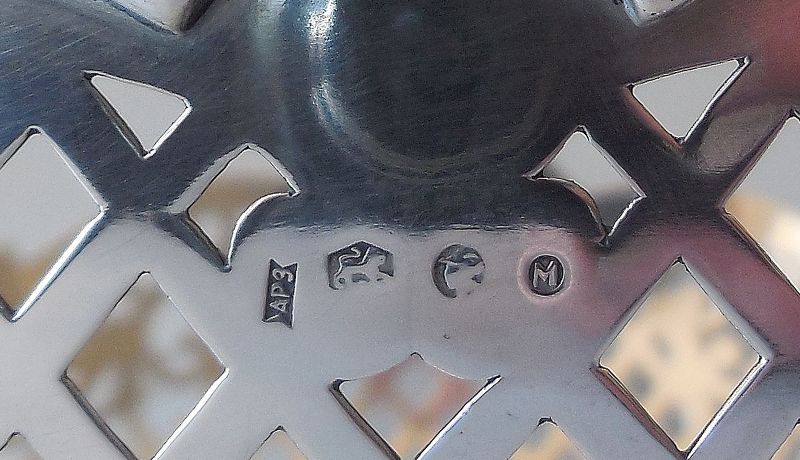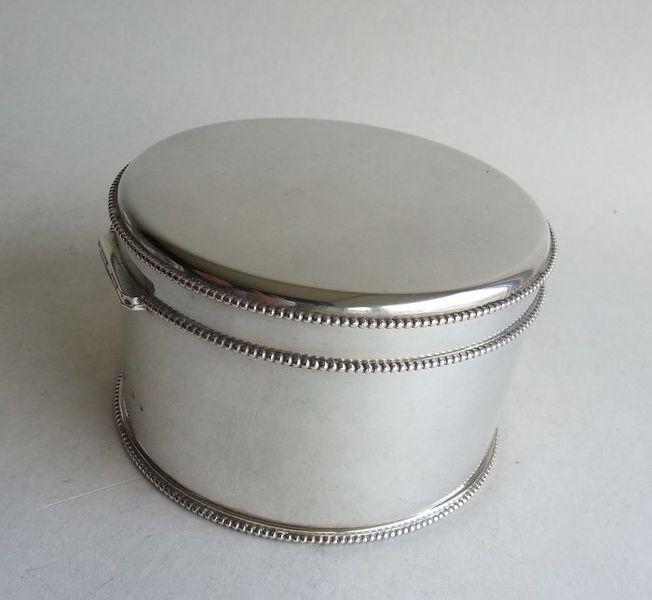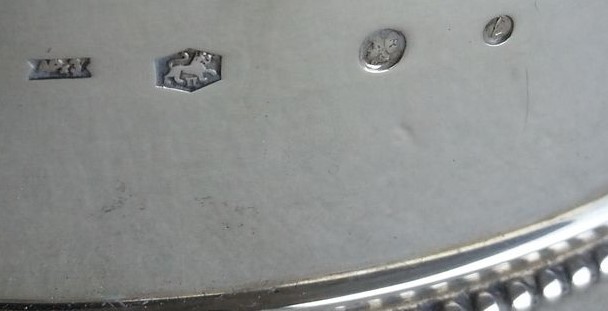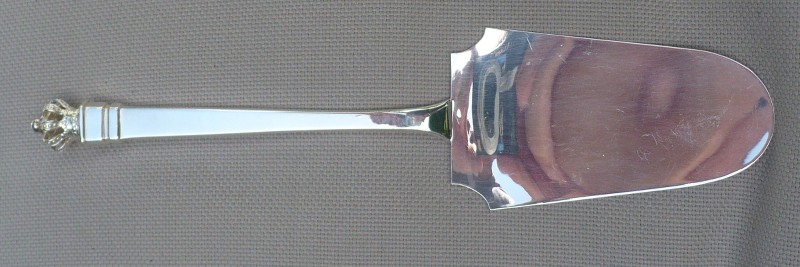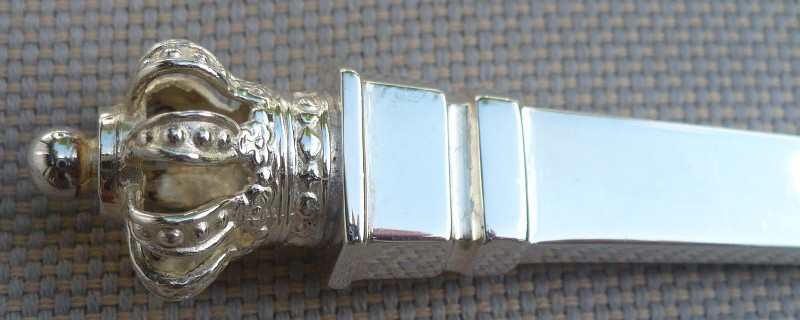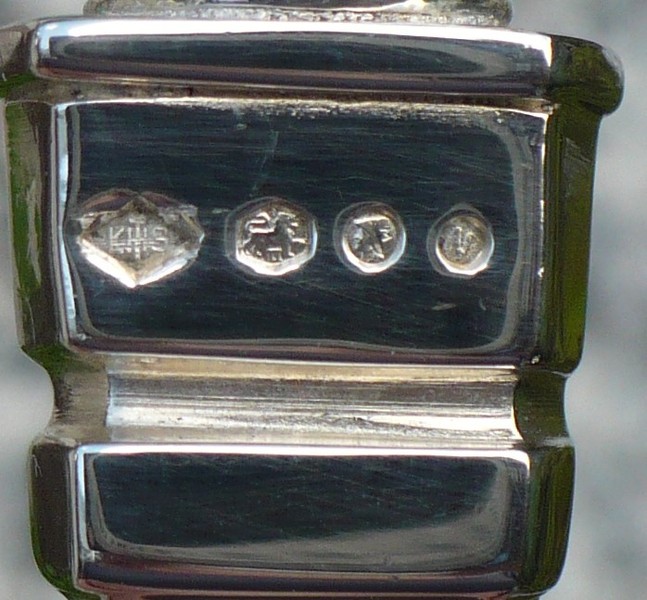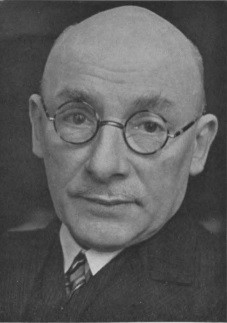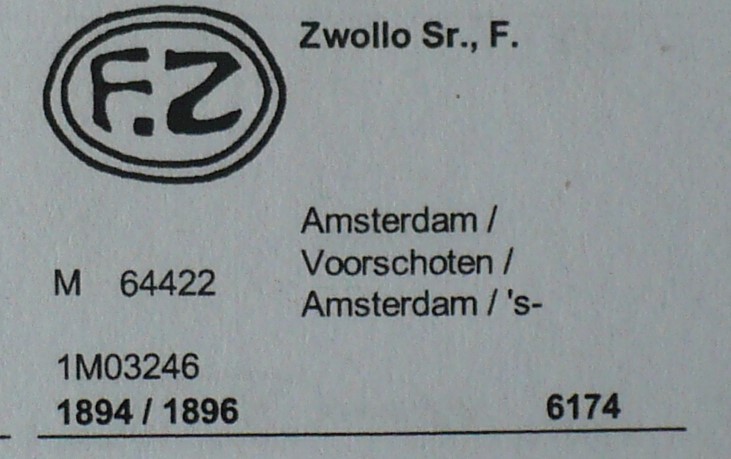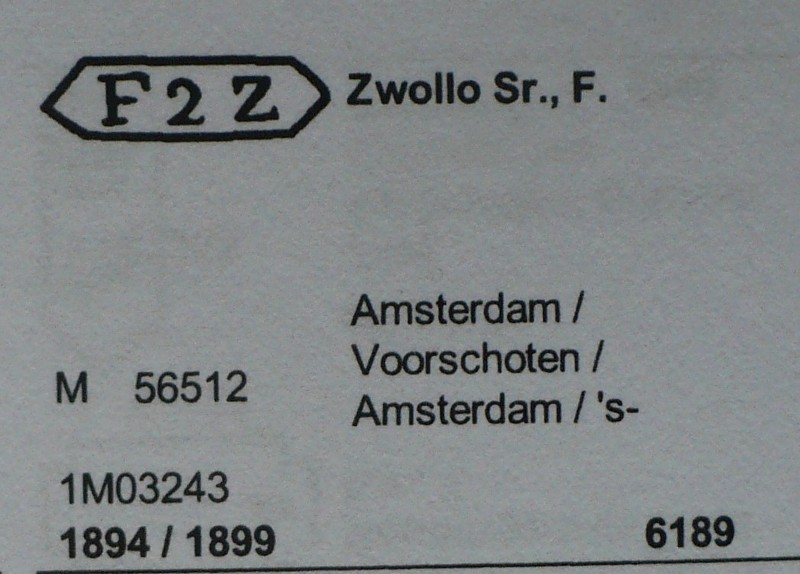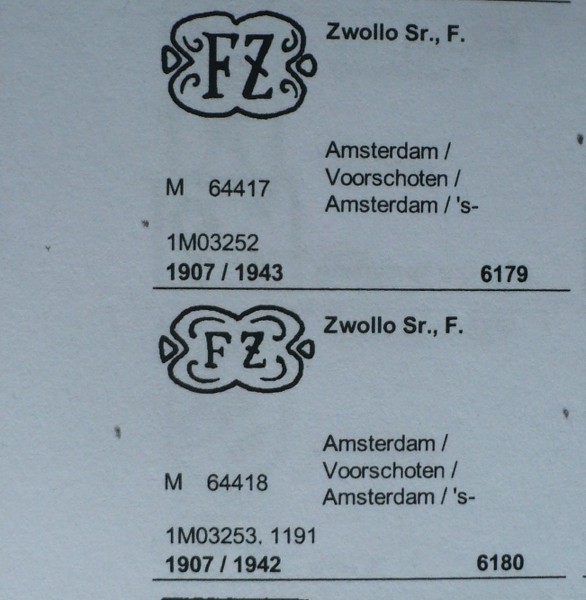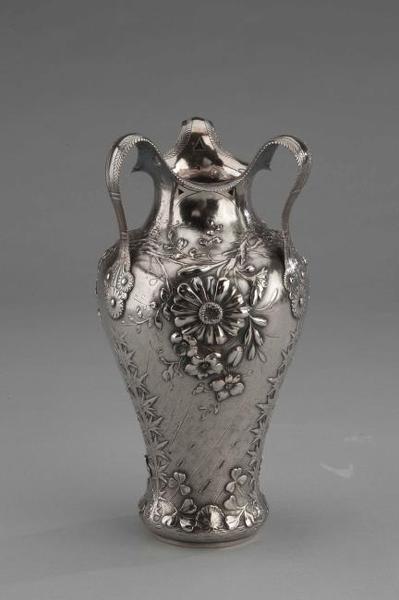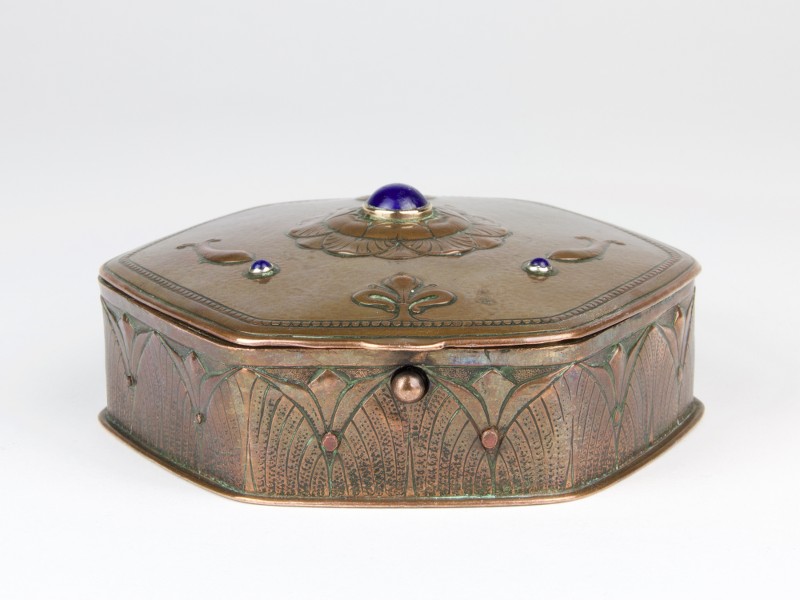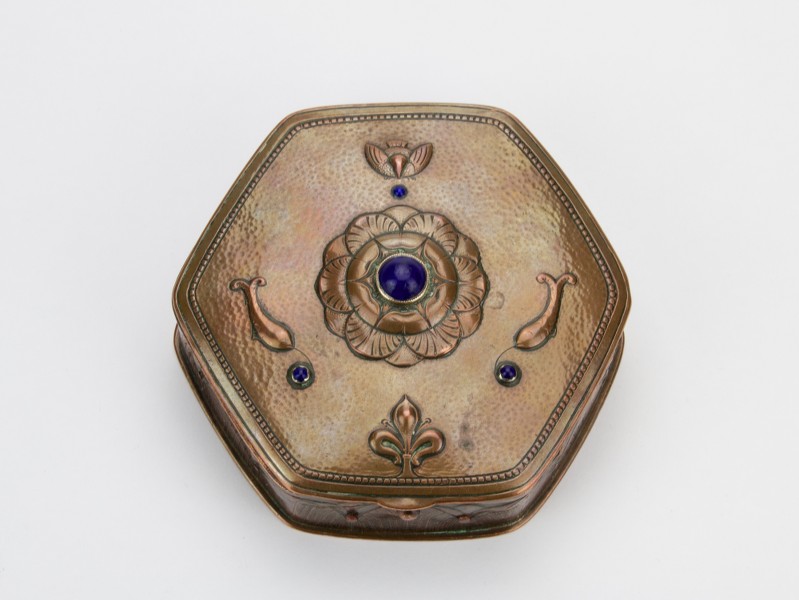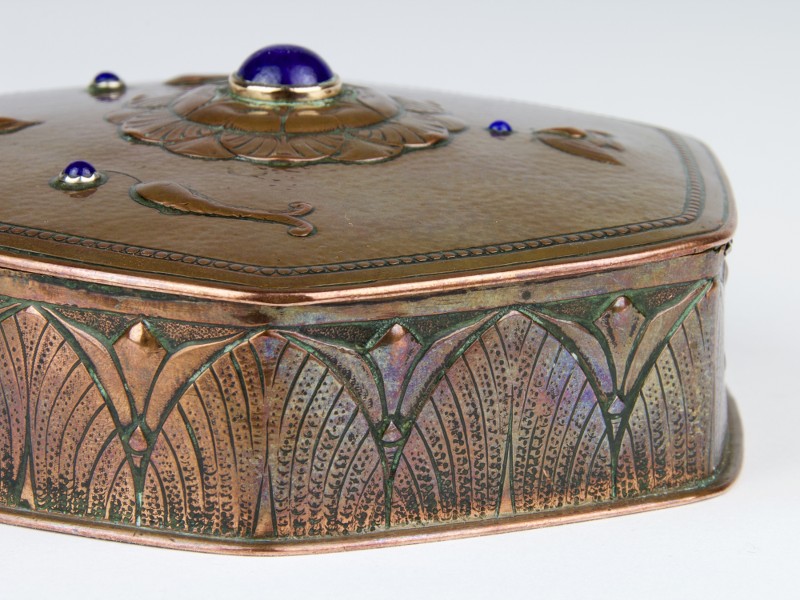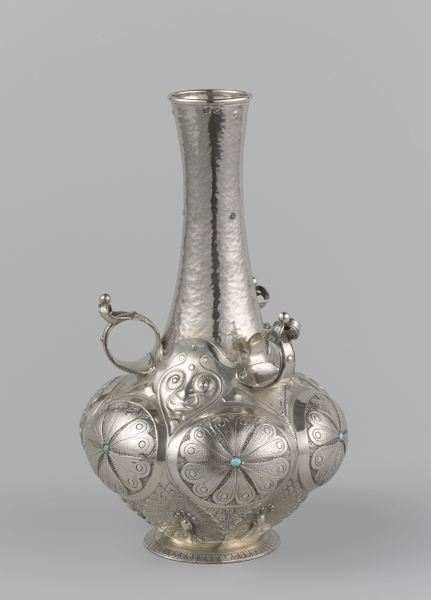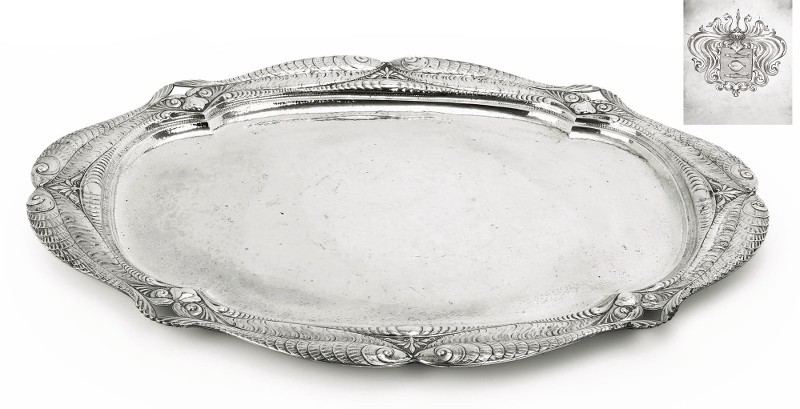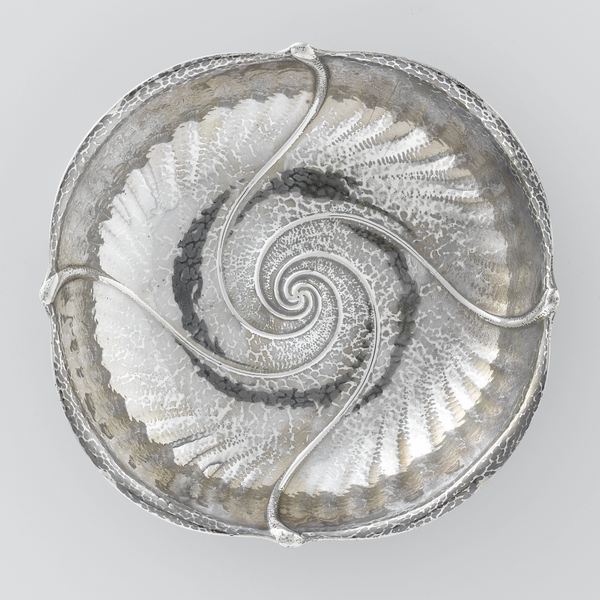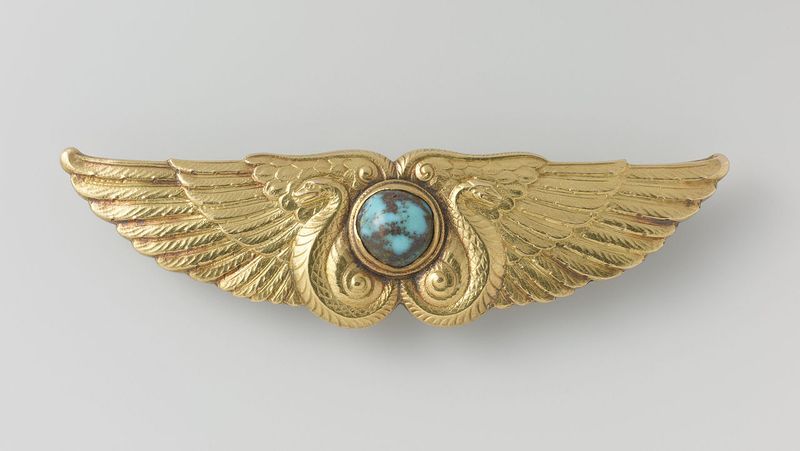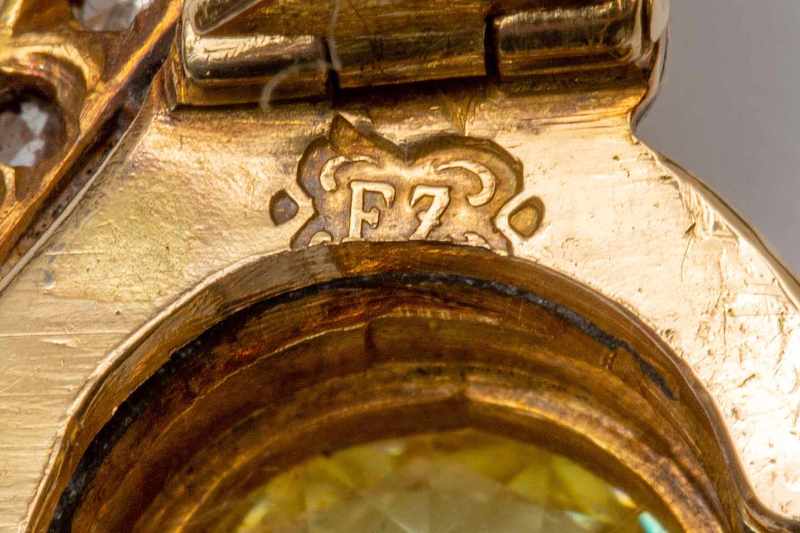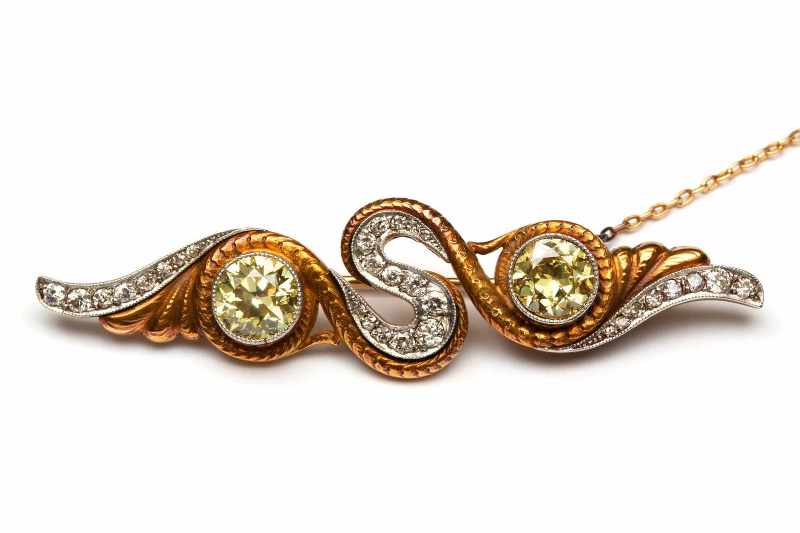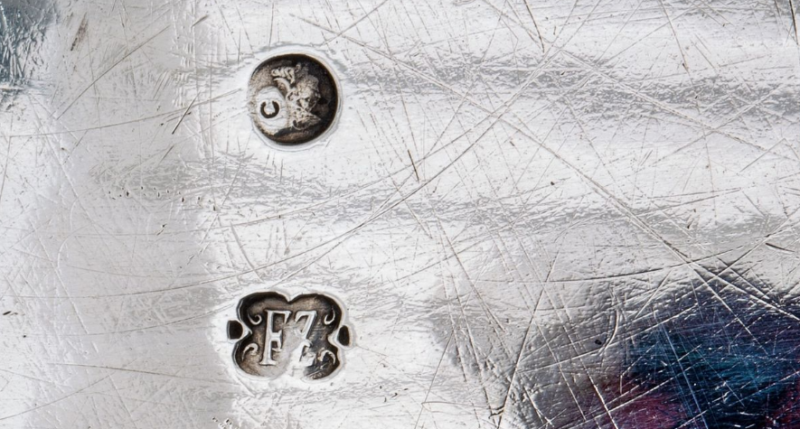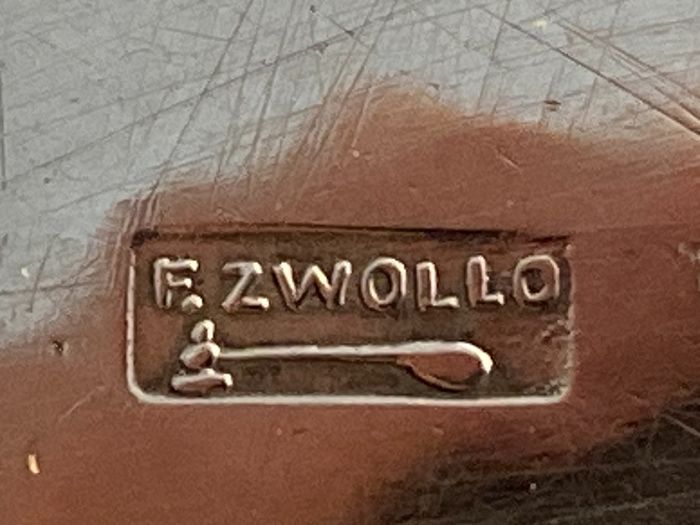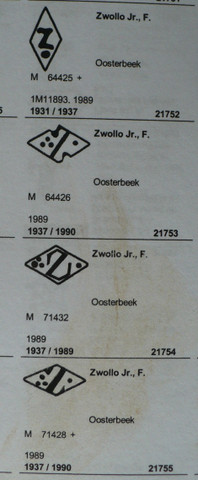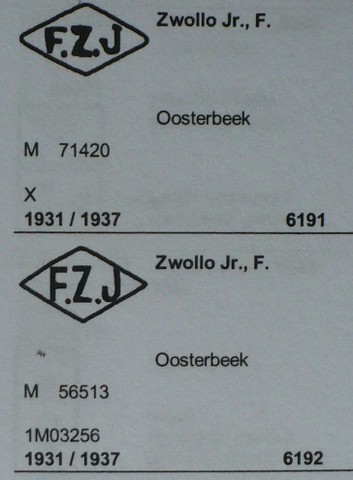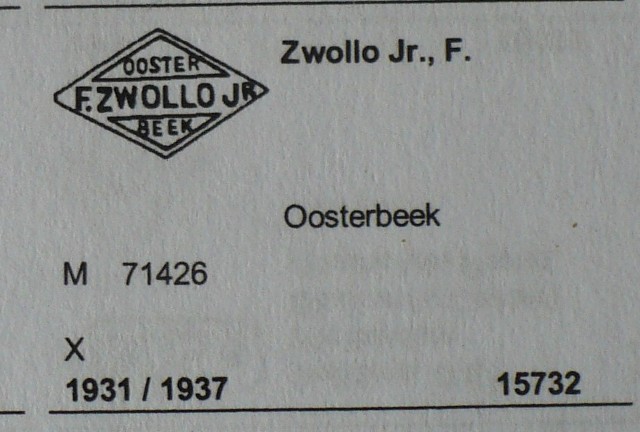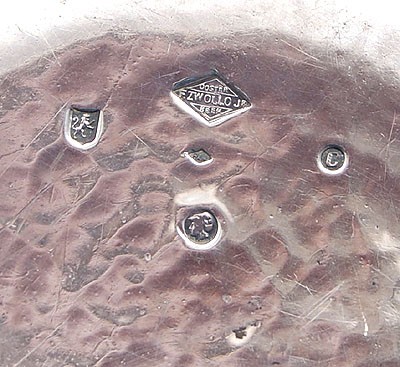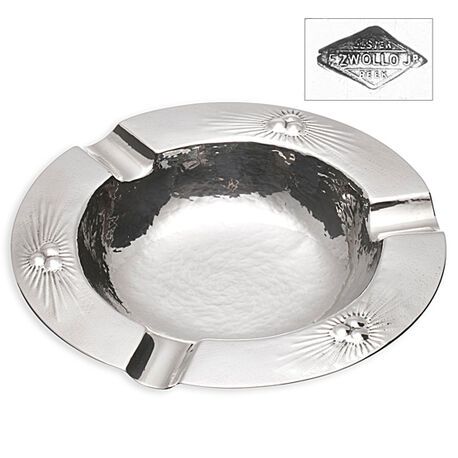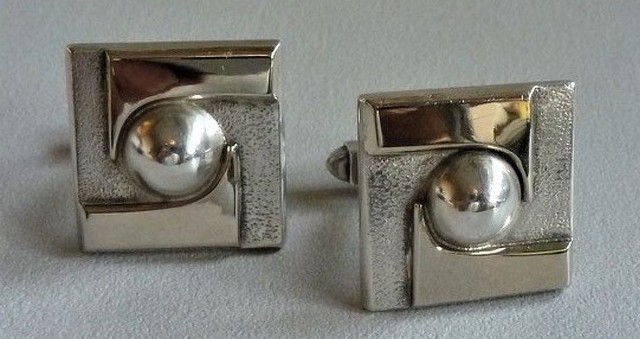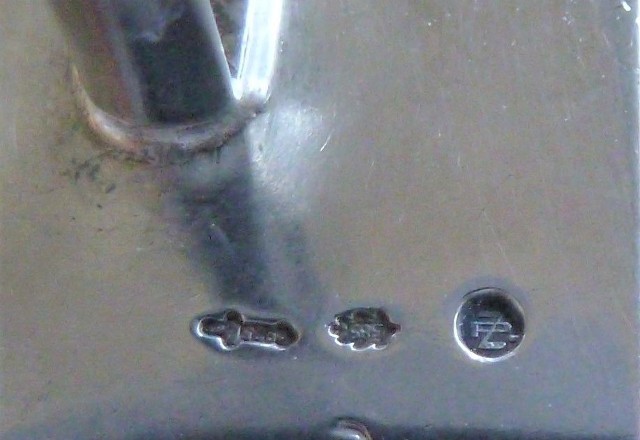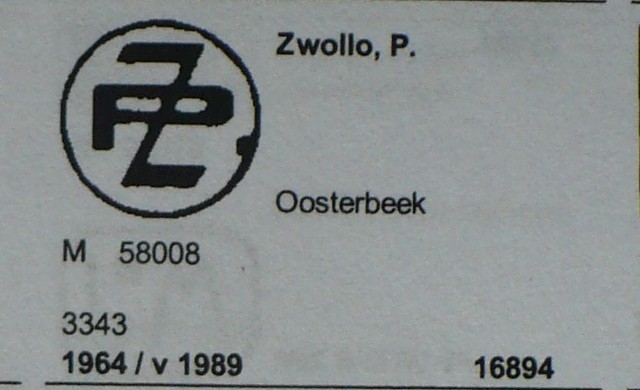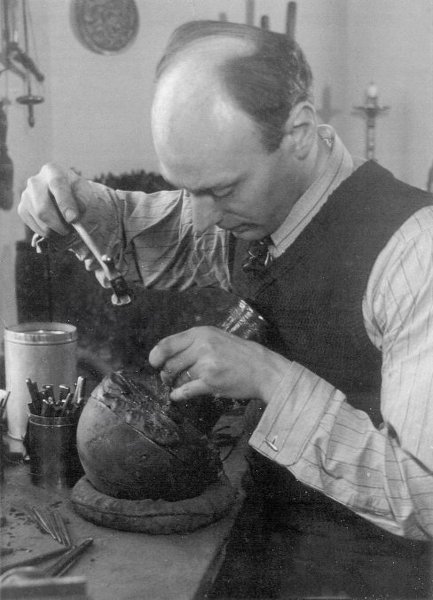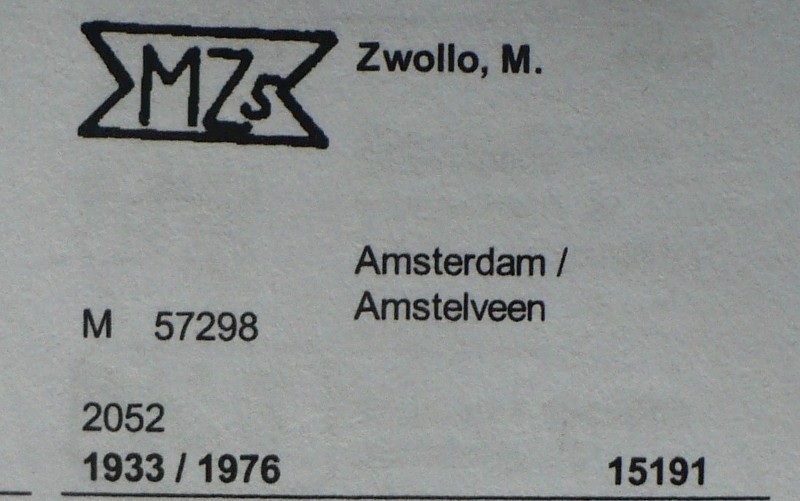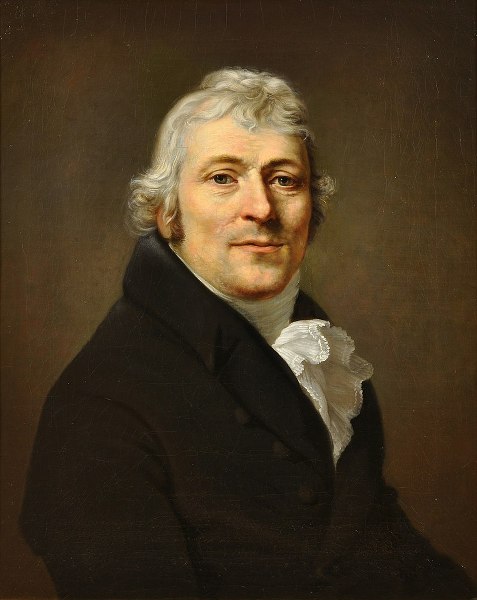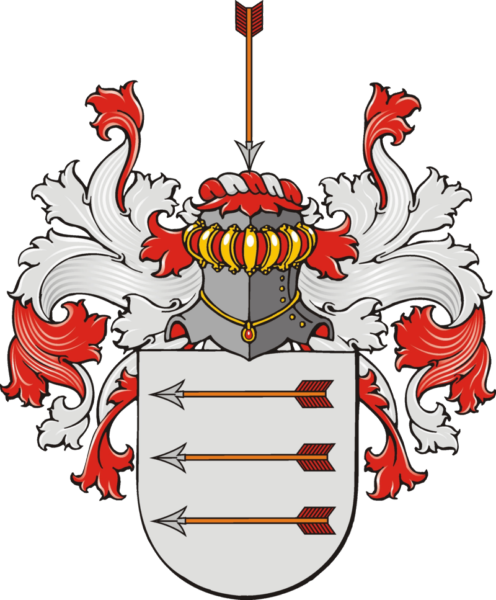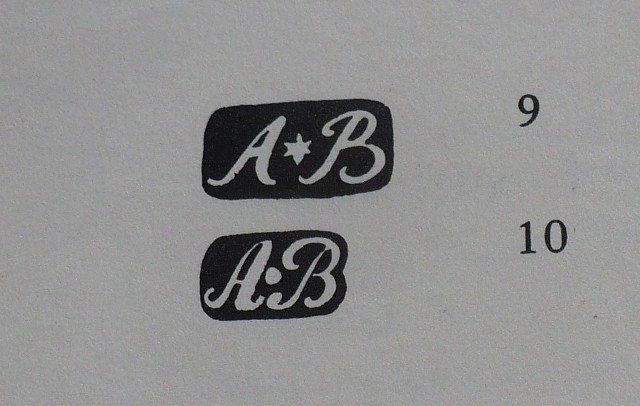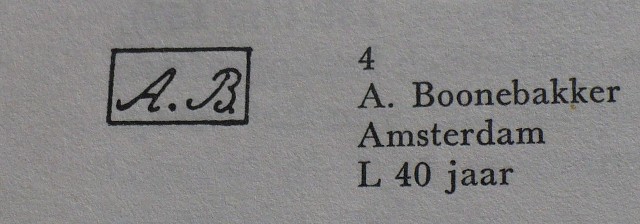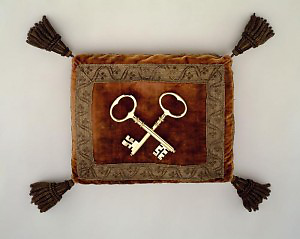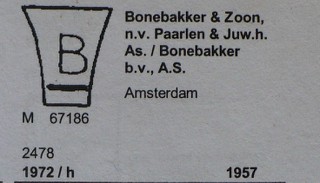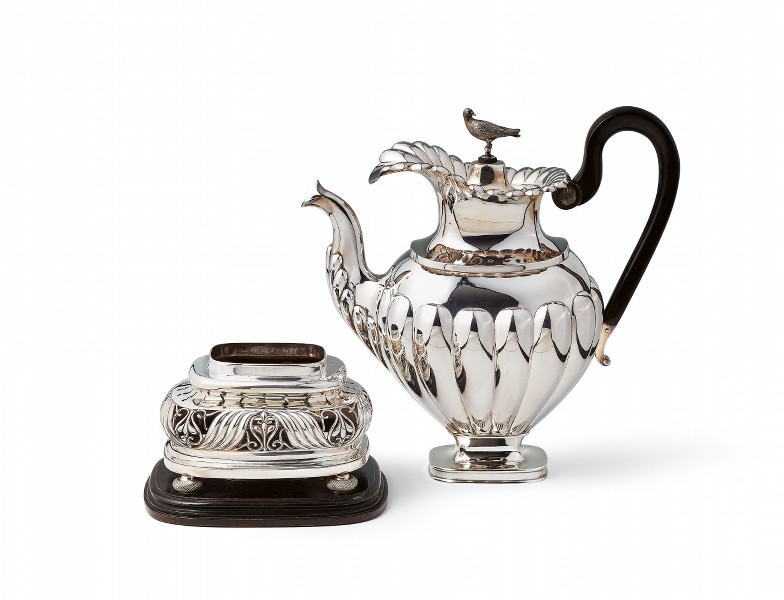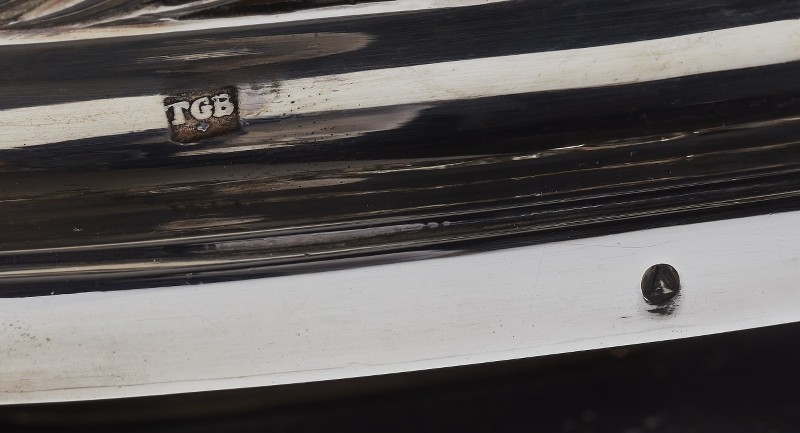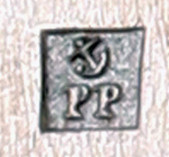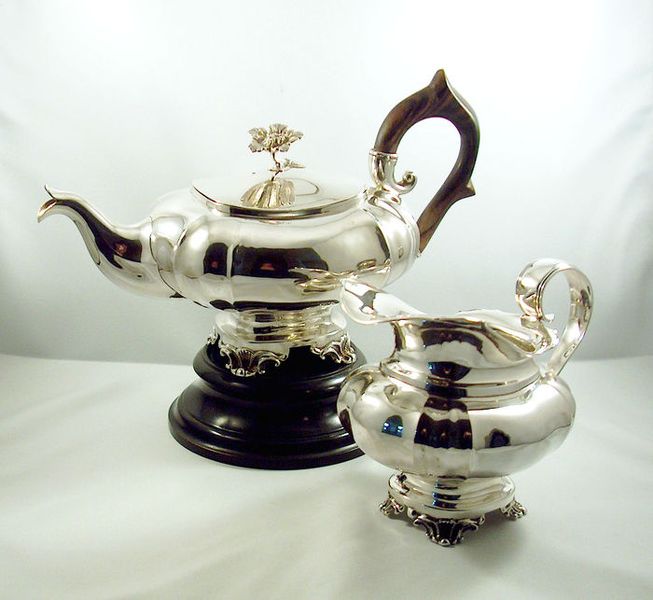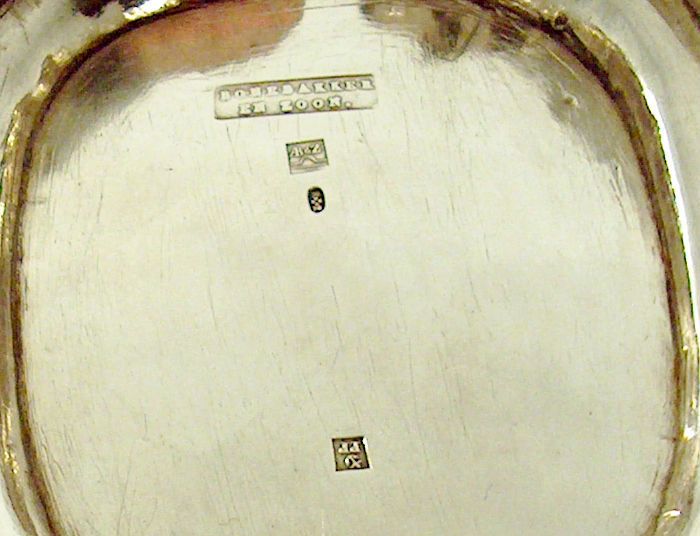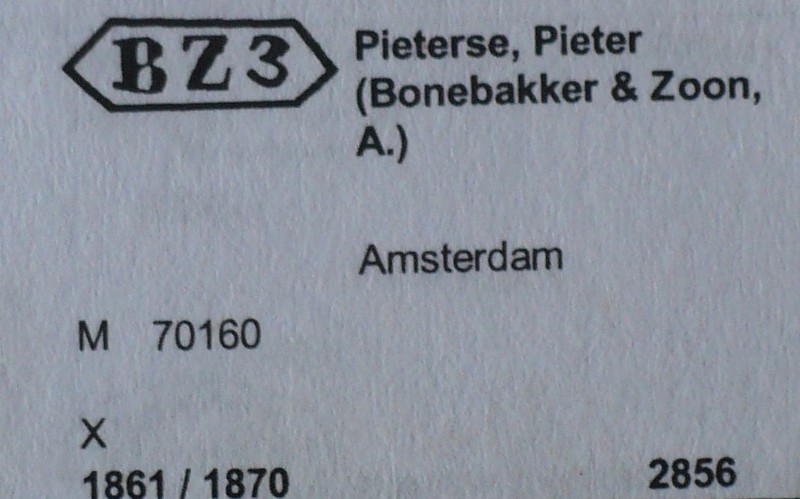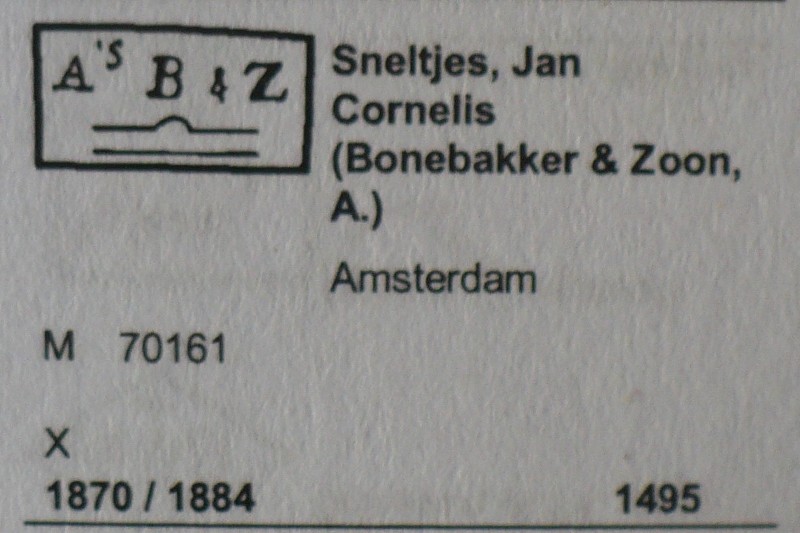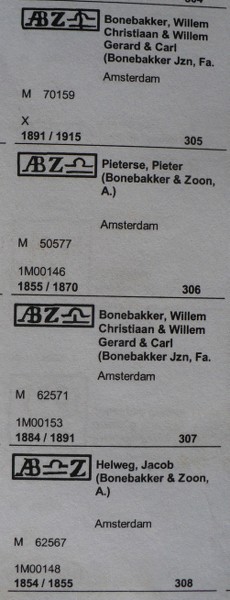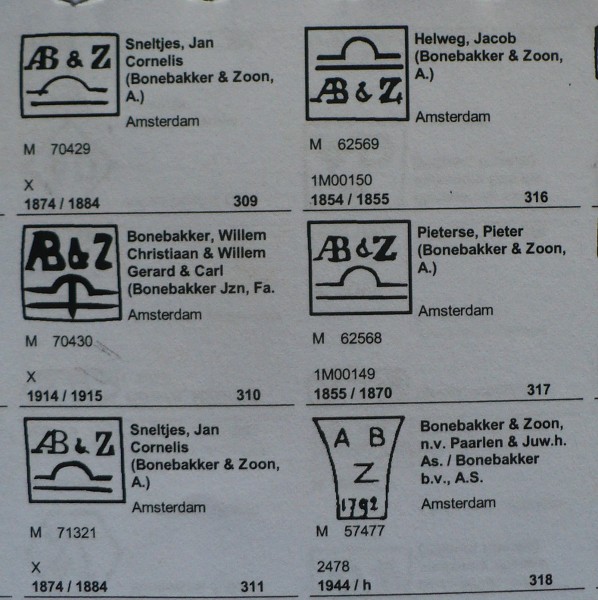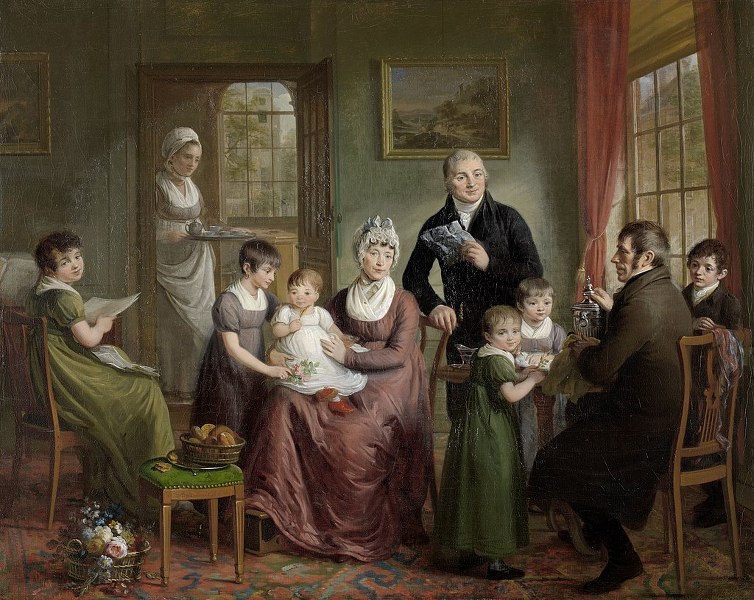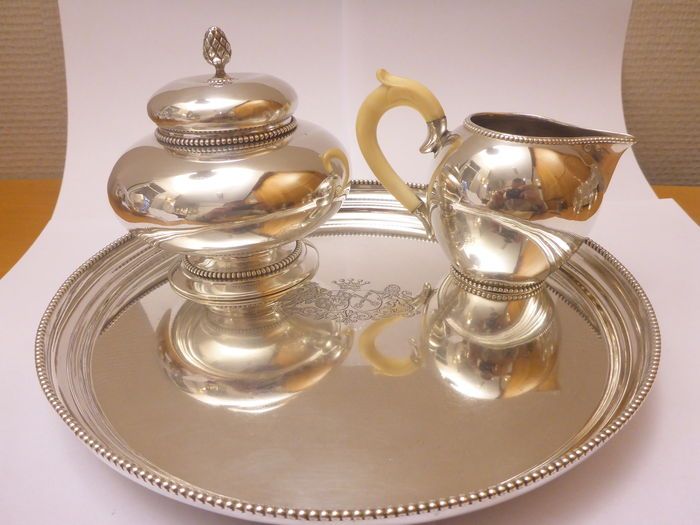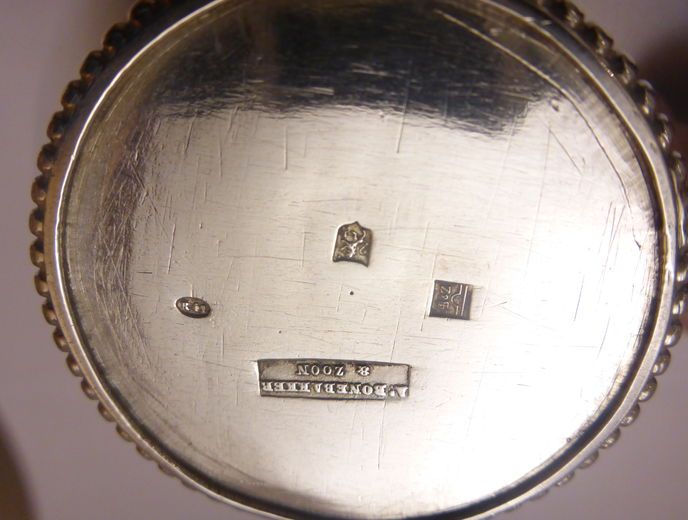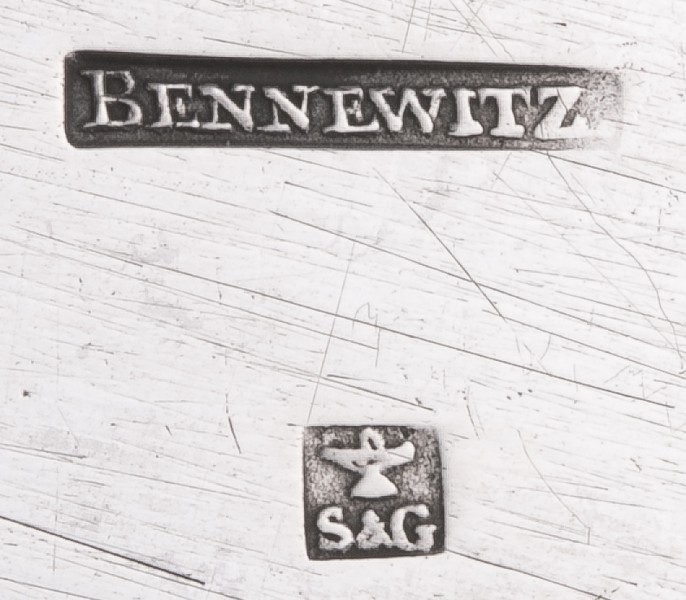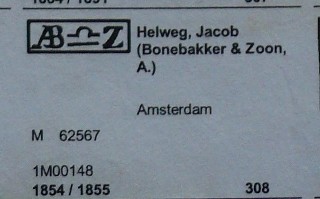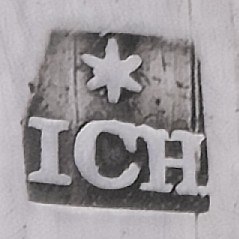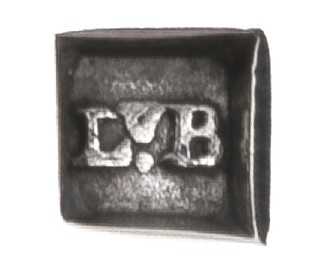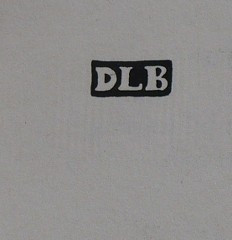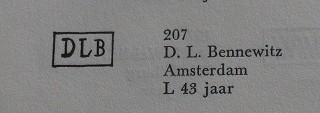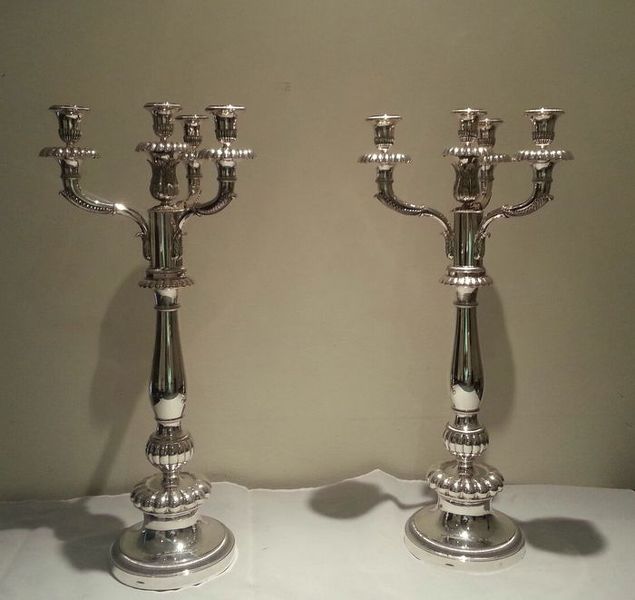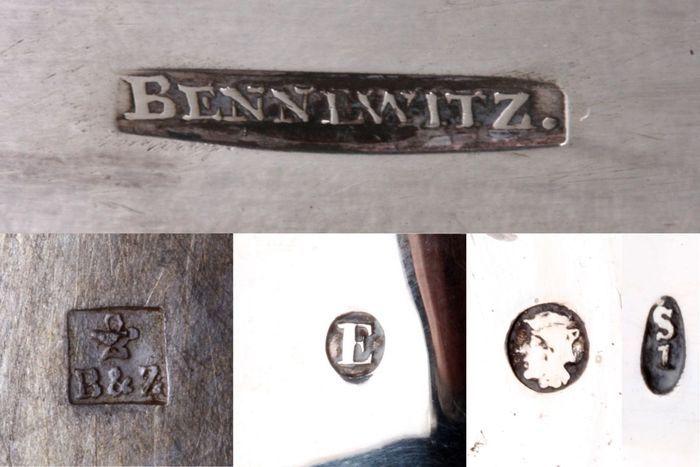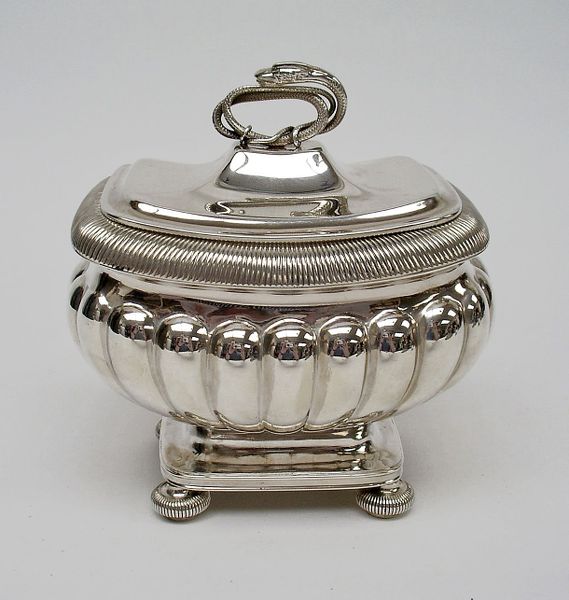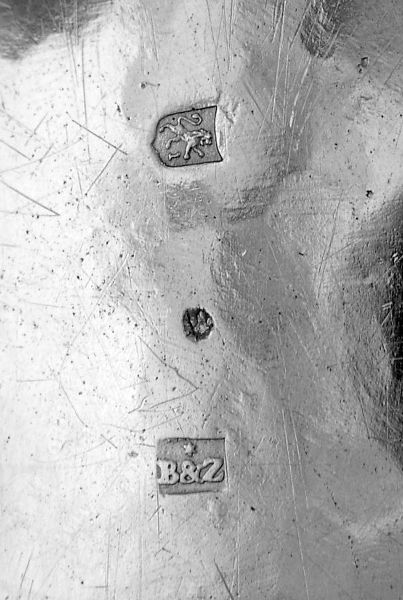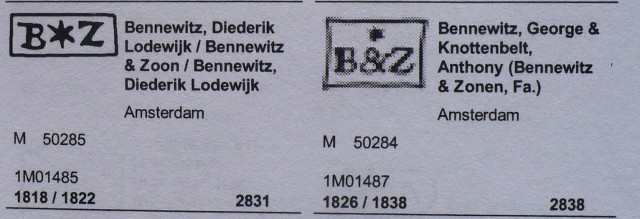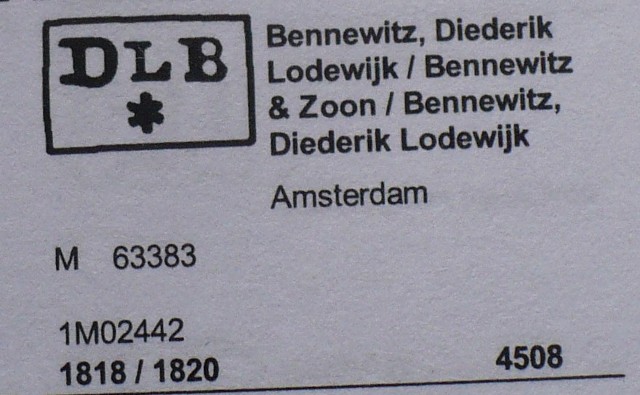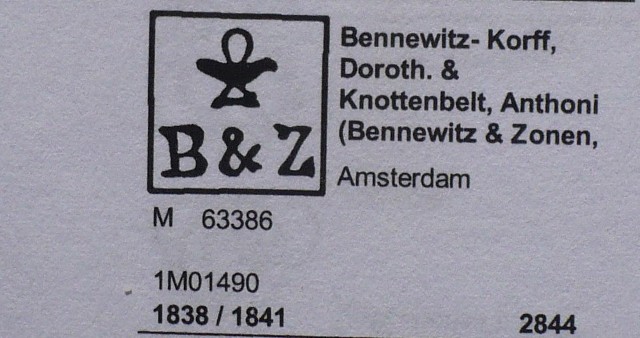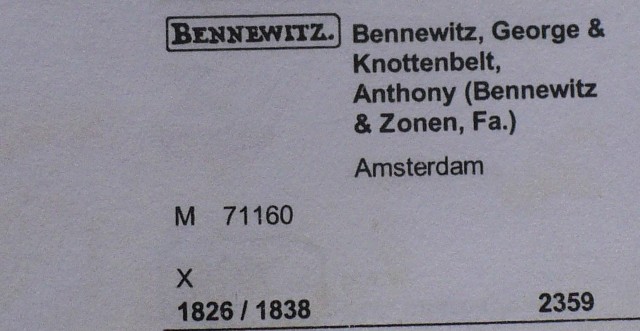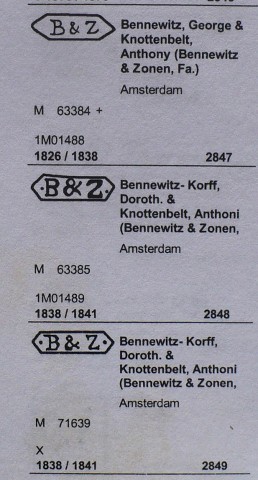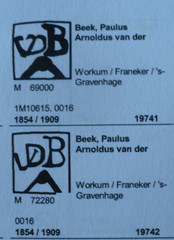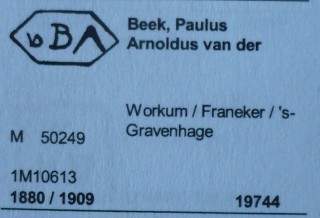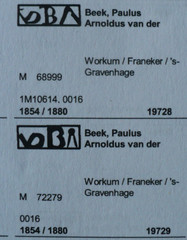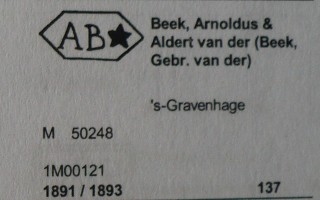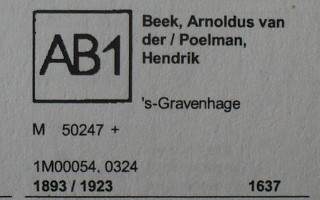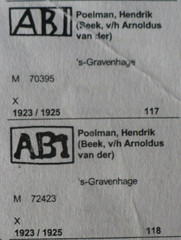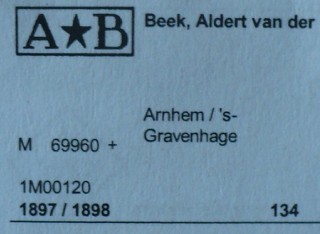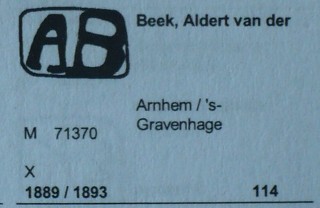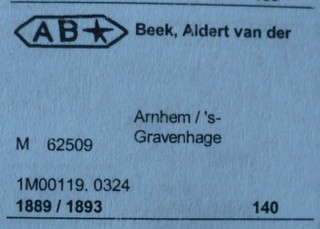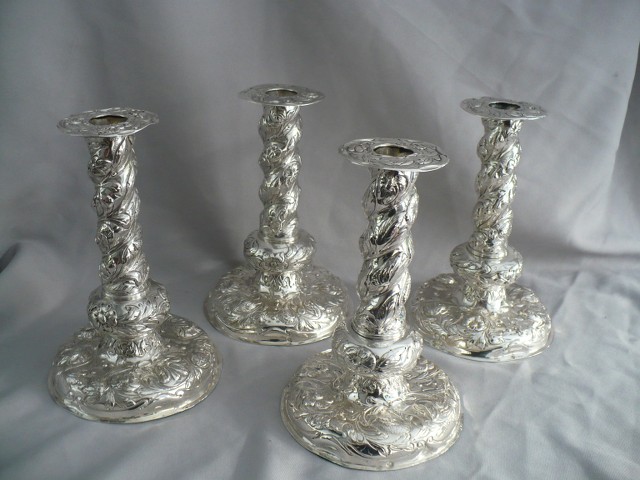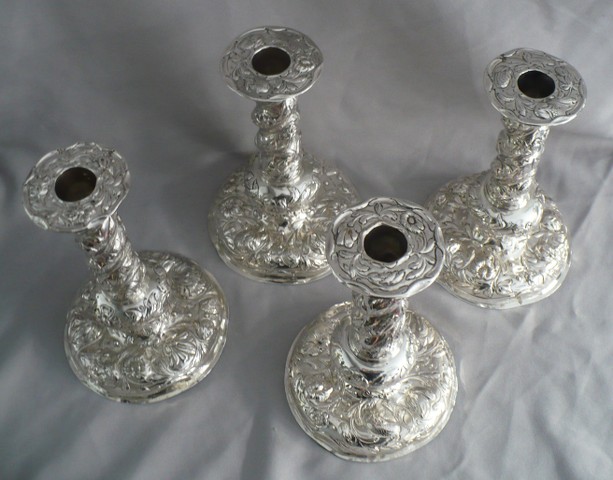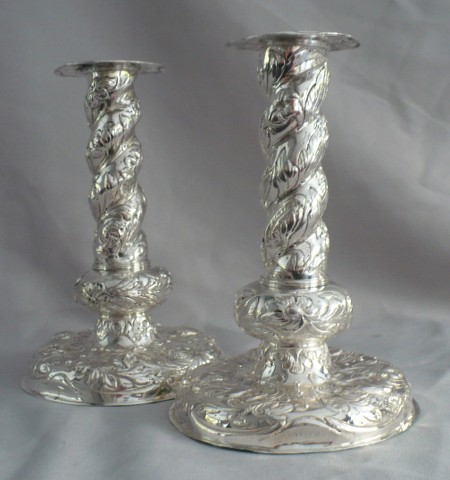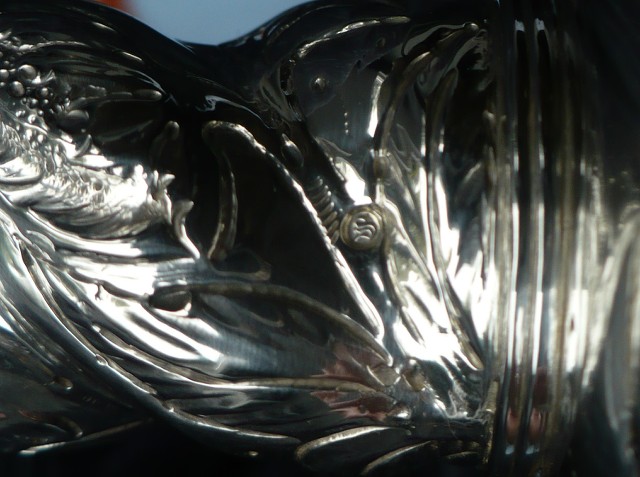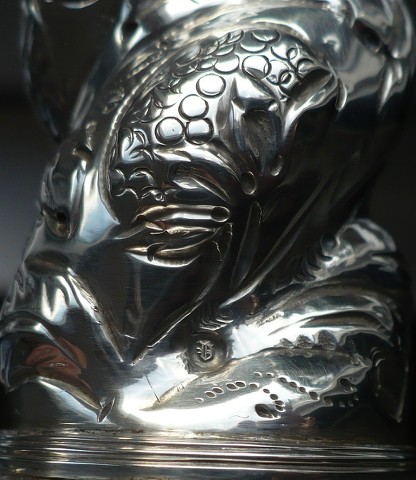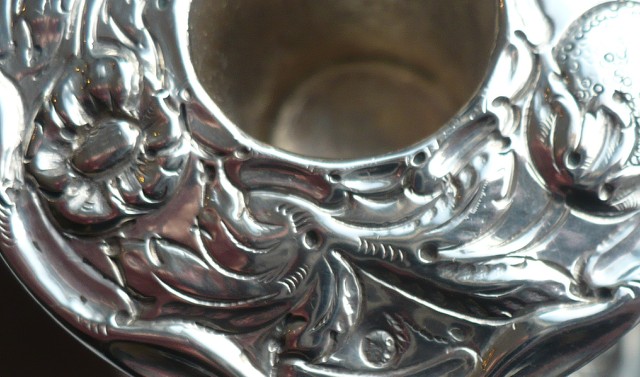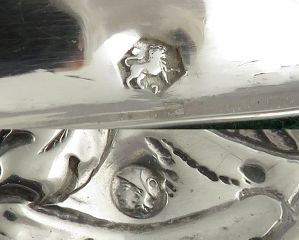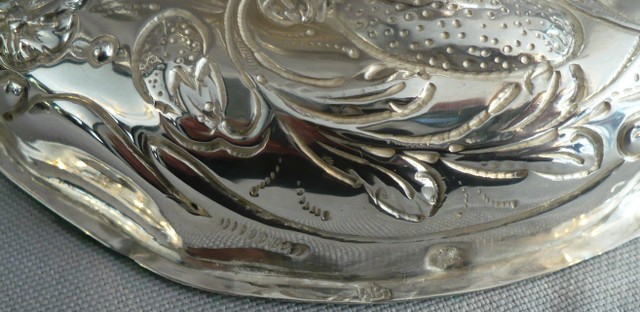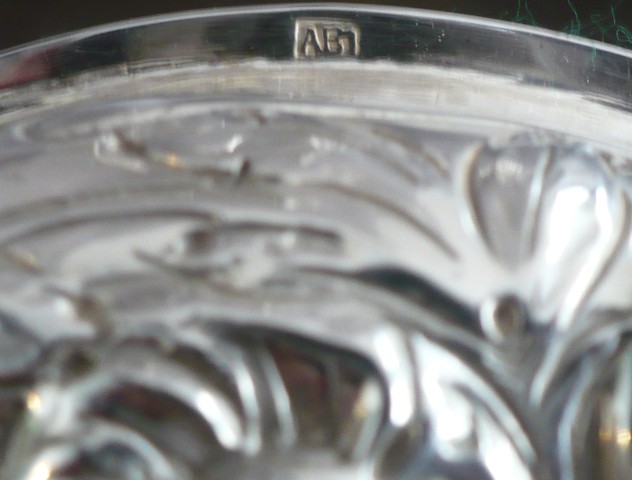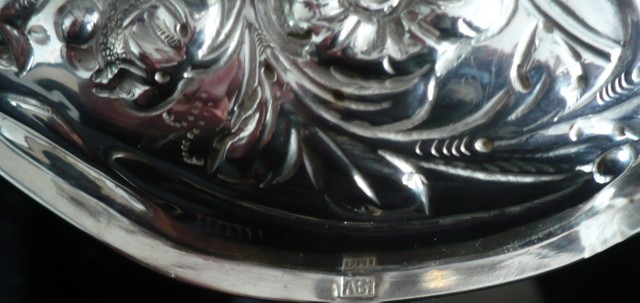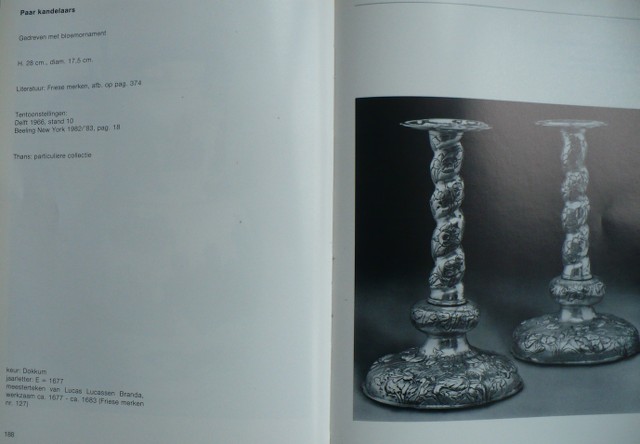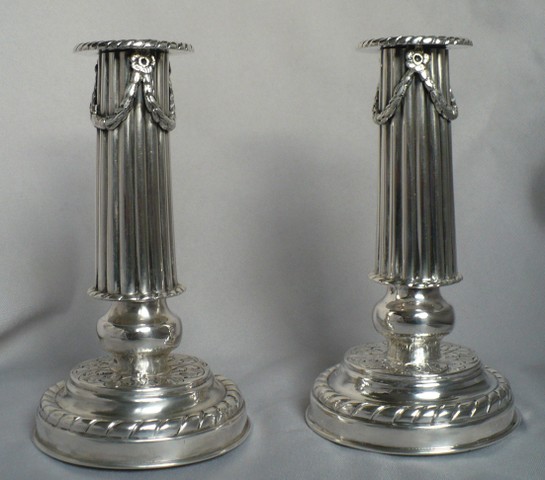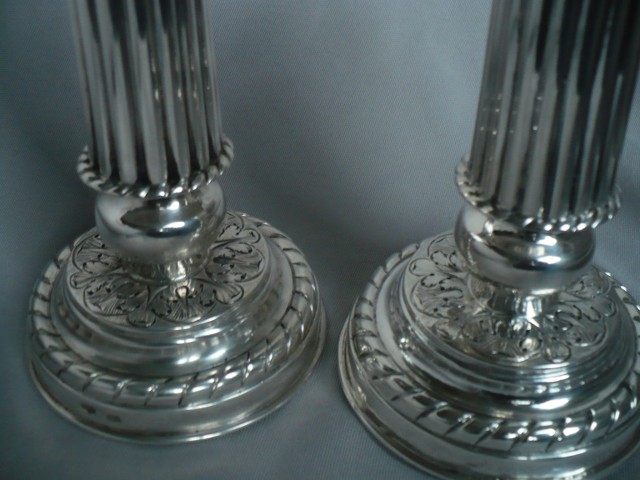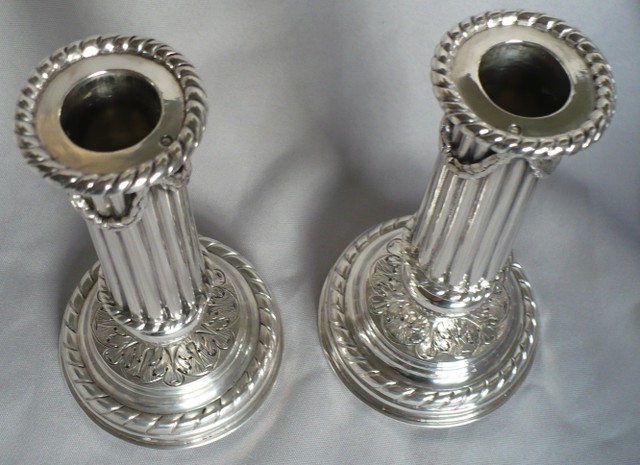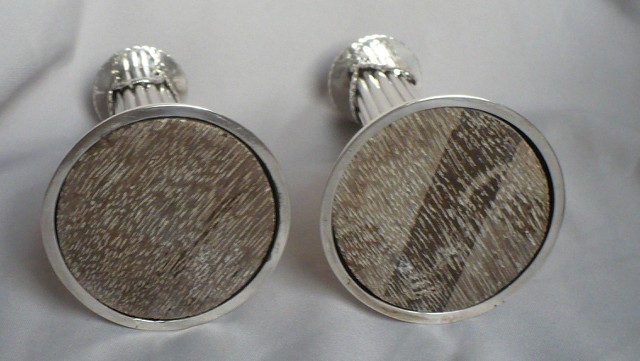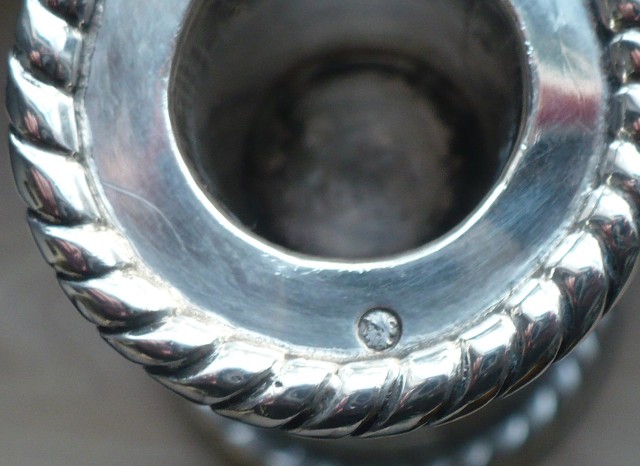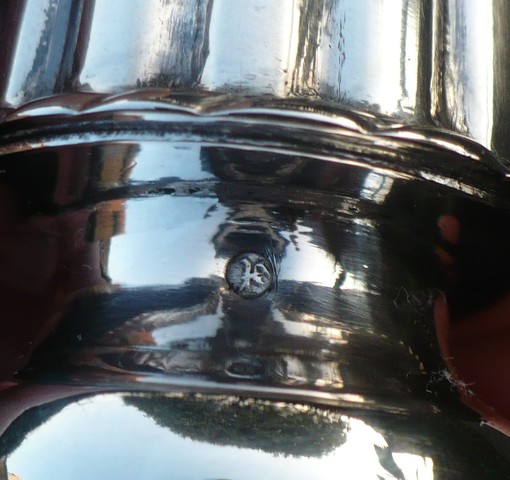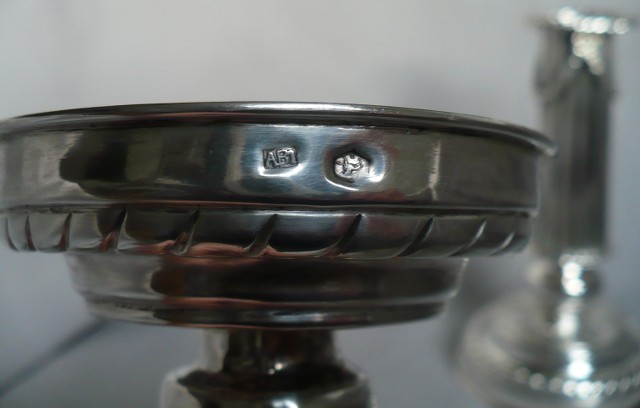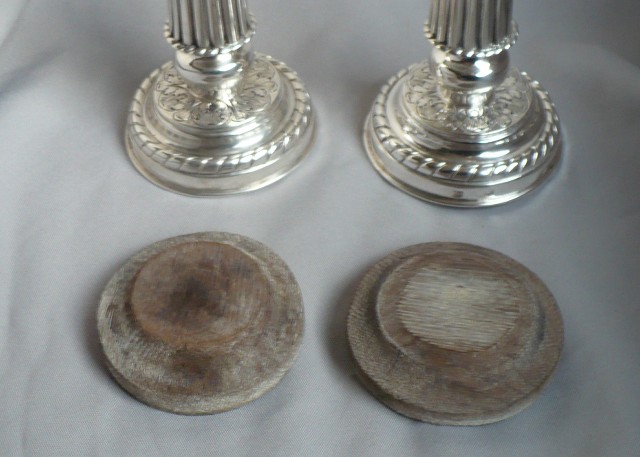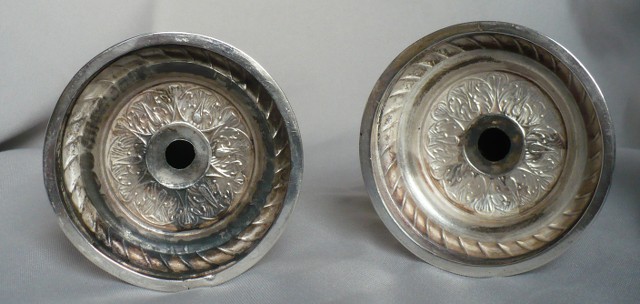Van Kempen & Zonen/Kempen & Begeer & Vos/Koninklijke Nederlandse Edelmetaalbedrijven/Nederlandse Fabrieken van Kempen en Begeer N.V Gerritsen & van Kempen n.v. Zeist
History
“De Koninklijke Utrechtse Fabriek van Zilverwerken” is a Dutch company in Zoetermeer dedicated to the Art of Silver & Goldsmithing. In 1866 G.F.J. Bauer, the founder of the
“Utrechtsche Zilverfabriek S. and J. van Lier & Zn and G.F.W Bauer “, was succeeded by
Carel Joseph Begeer (1840-1879) and a little later the factory changed its name to:
'Utrechtse Fabriek van Zilverwerken C.J. Begeer'(in 1868). Carel Joseph Begeer died a young age and was succeeded by his younger brother
Anthonie Begeer. At a later stage Anthonie married his brother’s widow Margje Johanna Straver on 1881 April 6. The son of Carel Joseph Begeer (1840-1879) & Margje Johanna Straver, called
Cornelis L.J. Begeer, at 1890 worked as a partner under his stepfather/uncle Anthonie Begeer and under his leadership the factory produced, around the year 1900, silver objects in the Art Nouveau style. In 1883 Carel J.A. Begeer was born, son of Anthonie & Margje Begeer-Straver and stepbrother of Cornelis L.J Begeer.
B under 2 stars;
C.L.J Begeer ,
Utrecht mark used 1904/1951

 B between 2 stars
B between 2 stars;
C.L.J Begeer , Utrecht mark used 1924/1941
C B above star;
C. J.Begeer, Kon. Utrechtse Fabriek van Zilverwerk, Utrecht, mark used 1868/1920

 Stylized B under crown, C. J. begeer, Kon. Utrechtse Fabriek van Zilverwerk, Utrecht, mark used around 1920- 1931
Stylized B under crown, C. J. begeer, Kon. Utrechtse Fabriek van Zilverwerk, Utrecht, mark used around 1920- 1931
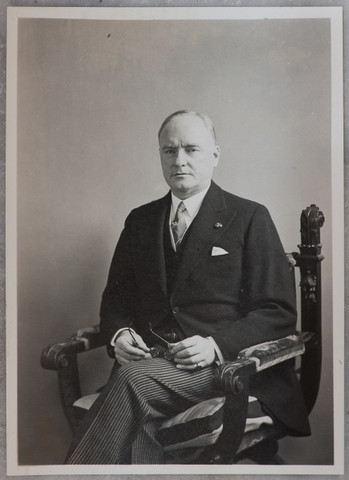 Carel J.A. Begeer
Carel J.A. Begeer; Dutch goldsmith, designer of ornamental silver & silver utensils and later became director of Royal Van Kempen, born October 15th 1883 in Utrecht - deceased November 12, 1956 in Voorschoten.
Carel J. A. Begeer enjoyed a broad education at home and abroad, both in the fields of trade, Art and technology. In 1904 he was artistic director of the company from his father, and co-partner in 1908, after the death of his father in 1910, he became director. In 1907, his first designs are carried out in silver. Showing Roman naturalist ornaments & medieval influences and art nouveau features.
Carel J.A.Begeer used the services of other famous designers, including Chris van der Hoef, Jan Eisenloeffel, Harm Ellens, George Lantman, Gerrit Rietveld and Erich Wichmann.
From 1904 until 1907 Jan Eisenloeffel designed metalwork and tableware for CJ Begeer in Utrecht.
In 1919 Carel Begeer merged his company with "J. K. Kempen & Zonen' located inVoorschoten and the firm J. Vos located in Rotterdam The name of this newly merged company: de 'Koninklijke Nederlandsche Edelmetaal Bedrijven Van Kempen, Begeer en Vos (K.N.E.B.)'. The workshops of this new company were established in the city of Voorschoten.
The company, based in Voorschoten, was reorganized in 1925. C.J.A. Begeer and D. Vos become the new members of the Executive Board. Former director Anthony Everdinus van Kempen left the company to become a director by Gerritsen Zeist a competitor, from that time on called; Gerritsen and Van Kempen (1925-1960). 'Koninklijke Nederlandsche Edelmetaal Bedrijven Van Kempen, Begeer en Vos (K.N.E.B.)' then changed the name into: 'Van Kempen and Begeer'
The company now produced less labor-intensive products; series of machine made products.
Since 1927 the designers Christa Ehrlich and later the German Emmy Roth joined the company.
The depression midst thirties was survived by producing Keltum plate and stainless steel cutlery.
In 1960 the merger of the two competing companies Gerritsen en Van Kempen in Zeist and Van Kempen en Begeer in Voorschoten to: Koninklijke Van Kempen & Begeer, established in Zoetermeer, from 1985.
Carel Joseph Anton Begeer, in addition to his work as a director of a company, was involved in many administrative activities which include; chairman of the Chamber of Commerce in Utrecht, chairman of the Dutch Chamber of Commerce for Germany, president and board member of The Hague Dutch Society for Industry and Commerce, and country chairman of the Dutch Society for Industry and Commerce, chairman of several museums and an arts & crafts school, and many other functions. For his many services he was awarded the rank of Officer in the Order of Orange-Nassau, he also received various international awards.
He also published about his field of expertise like an introduction to the ‘History of the Dutch Goldsmith’. (de 'Geschiedenis der Nederlandse Edelsmeedkunst').
http://buitenplaatsberbice.nl/familie-begeer/
 SBU
SBU; C.L.J. Begeer, Stichtse Fabriek van Goud en Zilverwerken, Utrecht, mark used 1932/1936
 Crowned B
Crowned B; Koninklijke Begeer b.v., Arteliers voor Edelsmeed en Penningkunst 1959- present
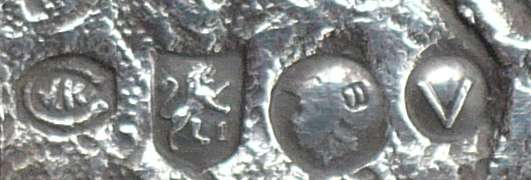
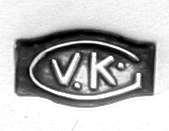
 V.K. within G
V.K. within G or horseshoe, frame 2 conjoined vases for; Gerritsen & van Kempen n.v. Zeist around 1926/? (1961)

K.B above V for
Kempen & Begeer &
Vos, Koninklijke Nederlandse Edelmetaalbedrijven, registered in the Dutch cities of
's Hertogenbosch, Utrecht and Voorschoten .Year used 1920-1931.

VKB under a crown above crescent moon for Koninklijke (Royal) Nederlandse Fabrieken van Kempen en Begeer N.V. or Koninklijke van Kempen en Begeer, date entry 1961-present, cities of Zeist & Voorschoten, Leiden en Zoetermeer.
 V
V above a
crescent moon for; Zilverfabriek Voorschoten (Silverfactory Voorschoten), a subsidiary of Koninklijke Nederlandse Edelmetaal Bedrijven( Royal Dutch Precious Metals Companies). Mark used 1925/1961
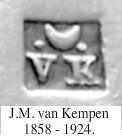
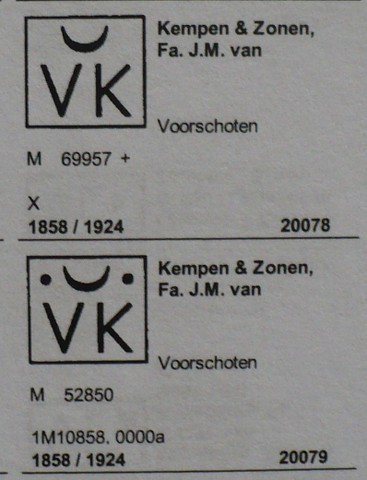
VK under crescent moon or crescent moon between two dots, is the maker's mark for Firm J. M. van Kempen & Zonen, city of Voorschoten in the Netherlands, date entry 1858-1924.
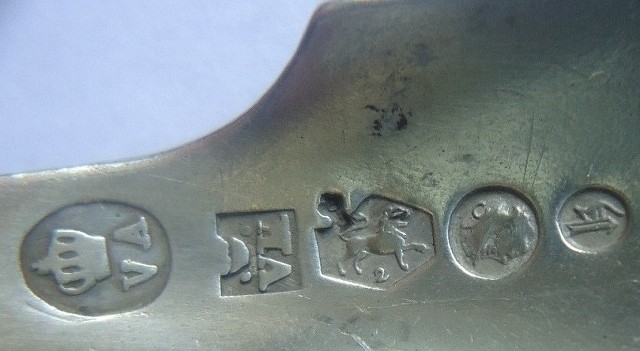
Image from left to right.
VA under a Crown for: van Arcken & Co registered in Batavia & Soerabaja ( Former Dutch Indies) registered from 1889 /?. Retailers.
VK under a crescent moon between two dots, maker's mark for: Firm J.M van Kempen & Zonen, located in the city of Voorschoten , this mark used 1858/1924
Lion Passant above 2: standard mark silver .833 fineness (1814-1953) with export key: mark to indicate 2/3 duty restitution upon export valid 1853 till 1953.
Minerva head or office mark with the regional assay office letter C in its helmet for the assay office of The Hague.
Date letter h for 1892
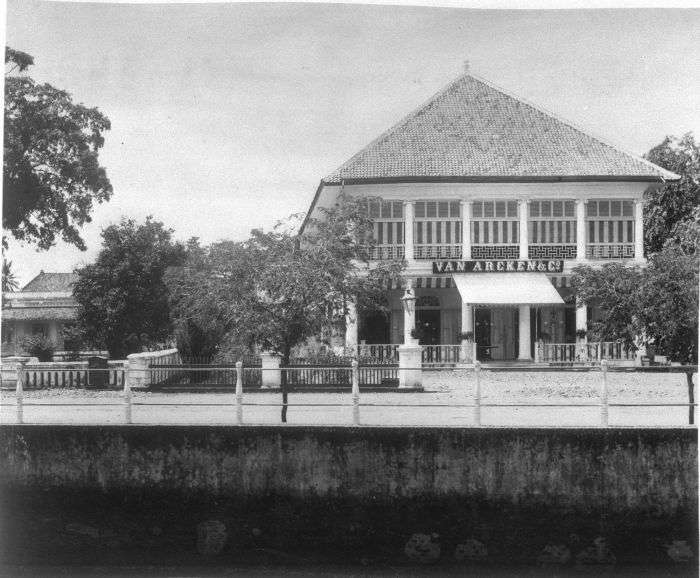
De winkel (shop) of Van Arcken & Co at the Molenvliet in Noordwijk at Batavia West Java around 1880
http://en.wikipedia.org/wiki/File:COLLE ... 009496.jpg
http://nl.wikipedia.org/wiki/Koninklijk ... %26_Begeer"
History of Royal Van Kempen & Begeer
1789 Johannes van Kempen joins the master guild
and founds his company.
1858 Royal assignation the company of Johannus
van Kempen by King Willem III.
1851 BK cookware is founded. In 1851 Coppersmith Hendrik Berk set up a factory in Kampen, the Netherlands.
1867 Participation at the World Exhibition in Paris.
1874 Participation at the World Exhibition in Vienna.
1912 Gero cutlery is founded, by Marius Gerritsen, a member of the famous silver family Gerritsen.
1919
Merger to KNEB for; Koninklijke Nederlandse Edelmetaal Bedrijven van Kempen, Begeer & Vos. One of the five subsidiary
called Zilverfabriek Voorschoten
1936 Keltum silver plated hollowware is founded, with its first collection being designed by Gustav Beran.
1960 Merger of bv Koninklijke van Kempen & Begeer.
1986 bv Koninklijke van Kempen & Begeer acquires Gero
1988 bv Koninklijke van Kempen & Begeer acquires BK
2004 Van Kempen & Begeer opens futuristic shop in Utrecht
2005 Establishment of RoyalVKB as international brand.
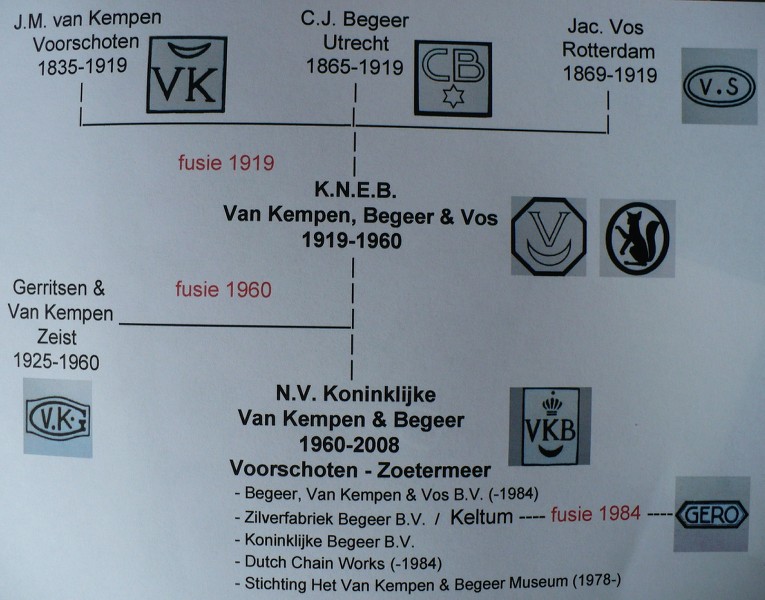 History of Van Kempen
History of Van Kempen
J. M. van Kempen (III)
Utrecht silversmith (1814-1877)
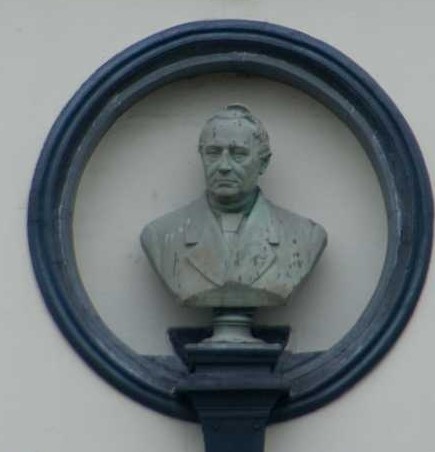
The name Van Kempen has long been a well known established ( household) name in the Dutch silver industry. This is mainly due to Johannes Mattheus (III) van Kempen (1814-1877), the first silver manufacturer to introduce modern production techniques in the Netherlands, to realize his dream of the mass production of silver and decorative objects. In 1858 the company moved from Utrecht to Voorschoten. In 1919 a merger took place with the firms of C.J . Begeer from Utrecht and Jac. Vos & Co. from Rotterdam. A few years later that merger initiated the departure of the Van Kempen from Voorschoten.
Johannes Mattheus van Kempen, joined in the footsteps of his father and grandfather both silversmiths. His grandfather was born in Utrecht in 1764, known as Johannes Mattheus van Kempen (I) and in 1789 admitted as master of the guild of silversmiths. His sons, Pieter Johannes (1790 - 1831) and Johannes Mattheus (II) (1792 - 1831) were also silversmith in Utrecht.
In 1834 Johannes Mattheus (III) (1814-1877) bought a modest shop at the Choorstraat in Utrecht.
He realized that factory made silver production would play an increasingly important role in modern society and it would play down the roll of the traditional handcraft gold smiting. Located at a large medieval building in Utrecht at the
Oude Gracht, which he bought in 1851, he ordered to build, a then very modern, steam engine. In this way he could with the help of an increasing number of well-trained employees, realize his dream: the modern way of producing cheaper, but good quality silver objects.
J. M. van Kempen wanted "pure of style" silver designs. In a brochure published in 1851, for the World Exhibition in London, Van Kempen discusses the five styles he used for his silverware: Greek, Gothic, Renaissance, Louis XIV and rocaille.
The main contribution of a Dutch silversmith at the first World's Fair, held in London in 1851, was that of the Utrecht silversmith J.M van Kempen. His entry consisted of five different objects in historical styles. Each style period represented with objects. In an accompanying letter Van Kempen explained that he had tried every style, as faithfully as possible, to interpret. The star of the exhibit was a jewelry box made by van Kempen which according to the silversmith 'exhibits characteristics of the Renaissance'.
Under Renaissance Van Kempen understood the style period introduced in the late 15th century in Italy and during the 16th and 17th century in France and England had celebrated triumphs. Like his contemporaries, Van Kempen did not distinguish between the early Italian Renaissance and the later French and English reaction thereof. Hence, in the decoration of the jewelry box motifs from both trends are recognisable: the little heads in the medallions go back to an invention by the Italian sculptor Lorenzo Ghiberti (1378-1442), while the scroll work with which the walls and the edges of the lid are decorated precisely characterises the last phase, which we now call Mannerism. Van Kempen appreciated in the Renaissance, especially the prominent ornamentation - the combination of surface ornament and sculptural elements.
The designer of the jewelry box, the painter and illustrator Gerardus Willem van Dokkum (1828-1903), succeeded to merge the past styles into a decidedly 19th-century object. In his design he took on more sculptural elements of his own invention. The most appealing is the dog on the cover, the dog as a guardian of the treasure jewelry. Under his front paw he holds an exact copy of the key to open the jewelry box.
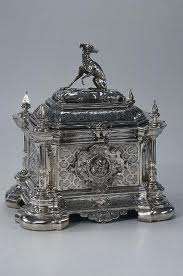
With three of his sons, Johannes Matheus is the founder and first director of the Koninklijke Nederlandse Fabriek van Gouden en Zilveren werken J. M. van Kempen & Zonen te Vooschoten (Royal Dutch Factory Golden and Silver Works J. M. Kempen & Sons in Voorschoten). At the opening of the new factory in 1858 in Voorschoten the predicate "Royal" has been granted to the company. since the sixties of the nineteenth century, English craftsmen were attracted to introduce the latest techniques for producing spoons and forks and famous artists like Willem van Dokkum and Hendrik Jacobus Valk, but also several anonymous designers were responsible for the often surprisingly modern designs of the silver ware produced in Van Kempen's factory.
The increasing prosperity in the second half of the nineteenth century also increased the demand for large silver and silver cutlery. Thanks to the introduction of modern mechanical techniques, the factory Van Kempen could meet with demands. Between 1860 and 1919 surprisingly new styles were introduced, as well traditional styles were maintained. In order to make a profit a plant with several hundred employees, had to be taking into account the tastes of all its customers.
At this time the factory production of large silver did not yet reached mass production . Only rarely were there more than three identical models simultaneously made. Mass production was the case with the manufacturing of cutlery and serving spoons, to meet demands, a special cutlery production plant was build . In this period the variation of cutlery increased dramatically; from cheese knives to you name it, each dish had its own spoon or fork & knife.
Van Kempen attached great importance to quality and careful finish of all the objects made. That is why the factory in Voorschoten made numerous commissions for the Royal Family and government institutions. In 1901 the president of the Zuid Afrikaanse Republiek (the old Transvaal ) Paul Kruger gave Van Kempen an important task to make a silver inkstand for Queen Wilhelmina of the Netherlands.
Although Van Kempen in the 20th century also followed internationally recognized styles, sales of silver in the neo-styles continues to be of importance to the plant, new styles & models which at the end of the 19th century were designed under the responsibility of head cartoonist Jacobus Valk. In this period Van Kempen used the services of external artists to create designs, such as decorative artist Karel Sluyterman. His products are characterised by the use of ornate Art Nouveau floral motifs. Also, anonymous artists designed for Van Kempen in this Art Nouveau style.
Early last century, besides these exuberant designs, Van Kempen also made products that are simpler and more austere in form. Like tea sets and serving spoons & forks decorated with geometrical designs.
The artist Jacobus Valk managed and directed a large number of engravers and drafters, like Jan J. Warnaar who became an important designer at the drawing department. The first ten years of the 20th century Jan Warnaar designed jars, jewelry boxes and spoons decorated with oriental ornaments and gemstones, however in 1922 Jan Warnaar left Van Kempen followed in 1924 by Jacobus Valk who also left Van Kempen. At that time the sculptor Hendrik A. van den Eynde was an important freelance designer for Van Kempen, his masterpiece a symbolic urn, made in 1919, as of today still recognized as a highlight of Dutch Silver Art.
With the artists' designs, Van Kempen draw attention and hoped for positive reviews and planned to sell more of the ordinary, modern work. Therefore Van Kempen contracted sculptor Johan Altorf and artisans Tjipke Visser and Francoise Carbasius, whose work were shown by Van Kempen in various exhibitions, like at the yearly Utrecht Fair.
In 1919 the factory merged with the Koninklijke Utrechtsche Fabriek van zilveren werken C.J. Begeer and Jac. Vos & Co. from Rotterdam. The production was continued in the city of Voorschoten under the name of; Koninklijke Nederlandse Edelmetaalbedrijven Van Kempen, Begeer en Vos (KNEB ). After years of internal discord Carl Begeer became director of the firm.
In 1936 the first silver-plated items were produced under the name
Keltum together with their Bugle (Hoorn) silver plate mark..
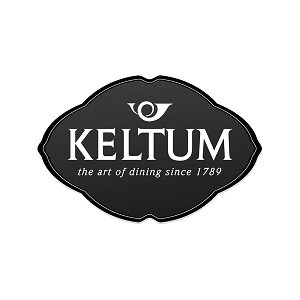
Candelabra Keltum 1962, designer Gustav Beran (1912-2006), marked Keltum 90
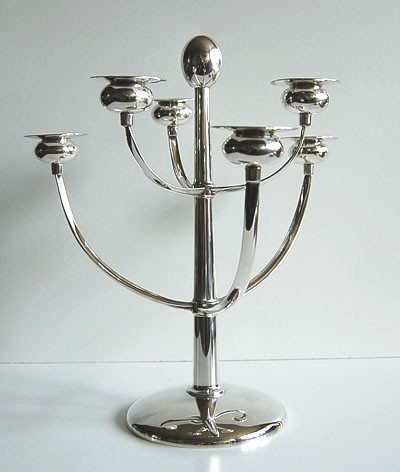
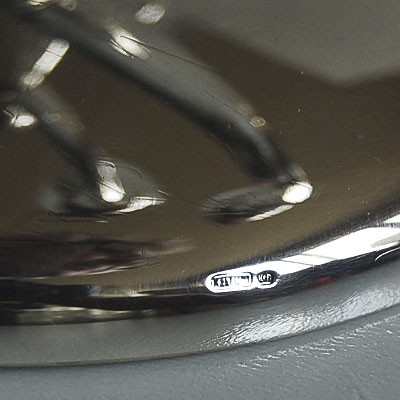
Keltum silver plate trademark
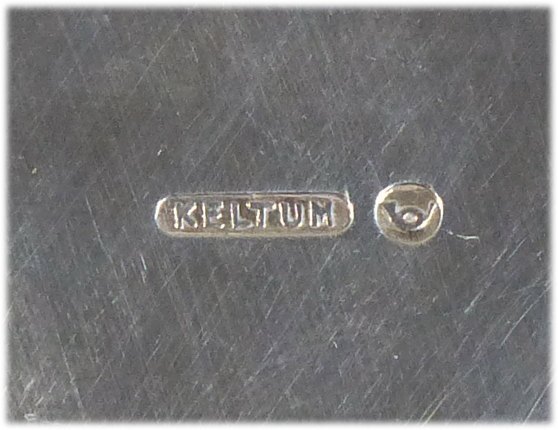
The Royal Delft Group acquired in September 2008 BV Koninklijke Van Kempen & Begeer.
Oel
http://website.rkd.nl/Projecten/crva/3- ... jes-ws.pdf"
..

